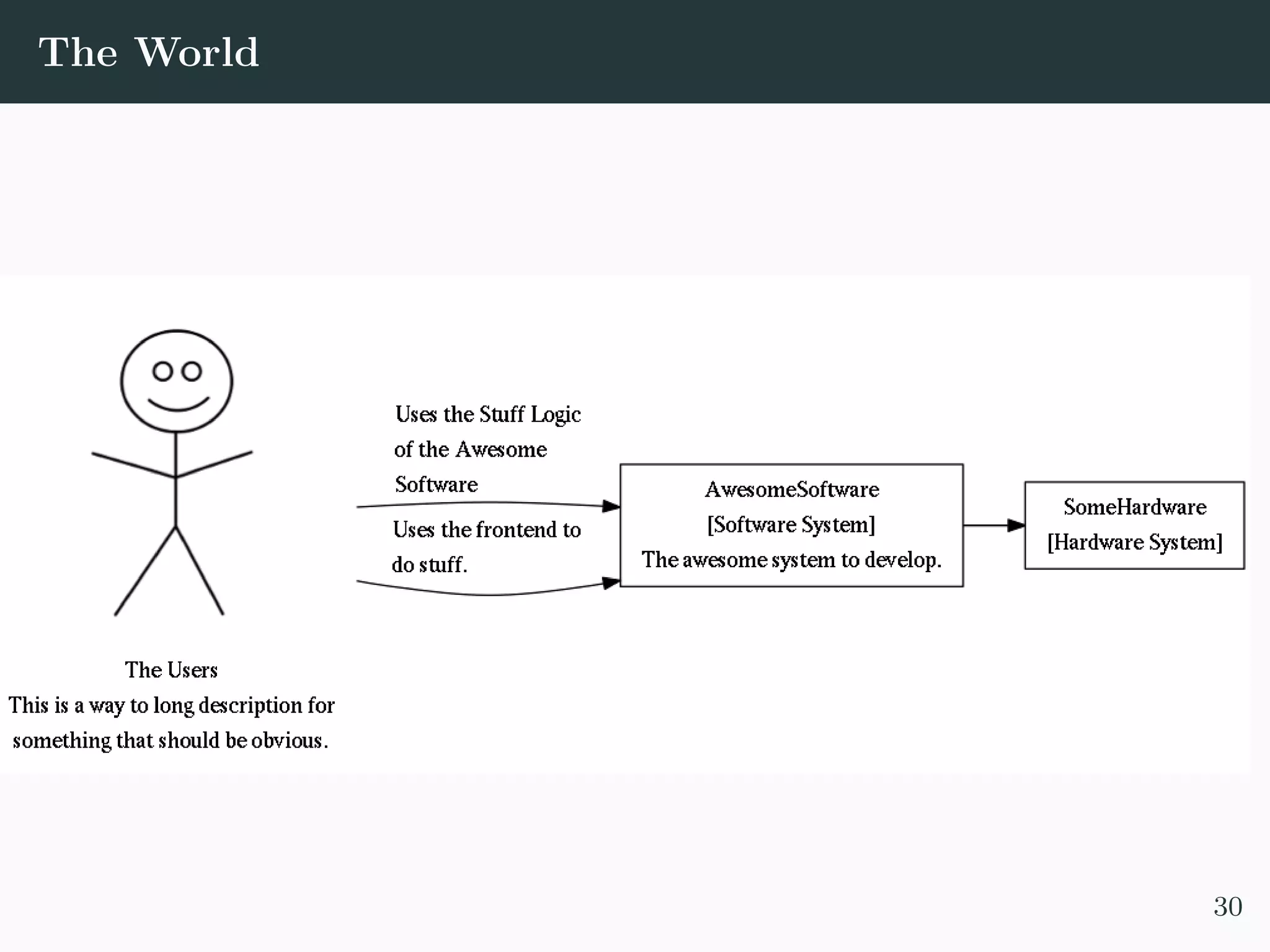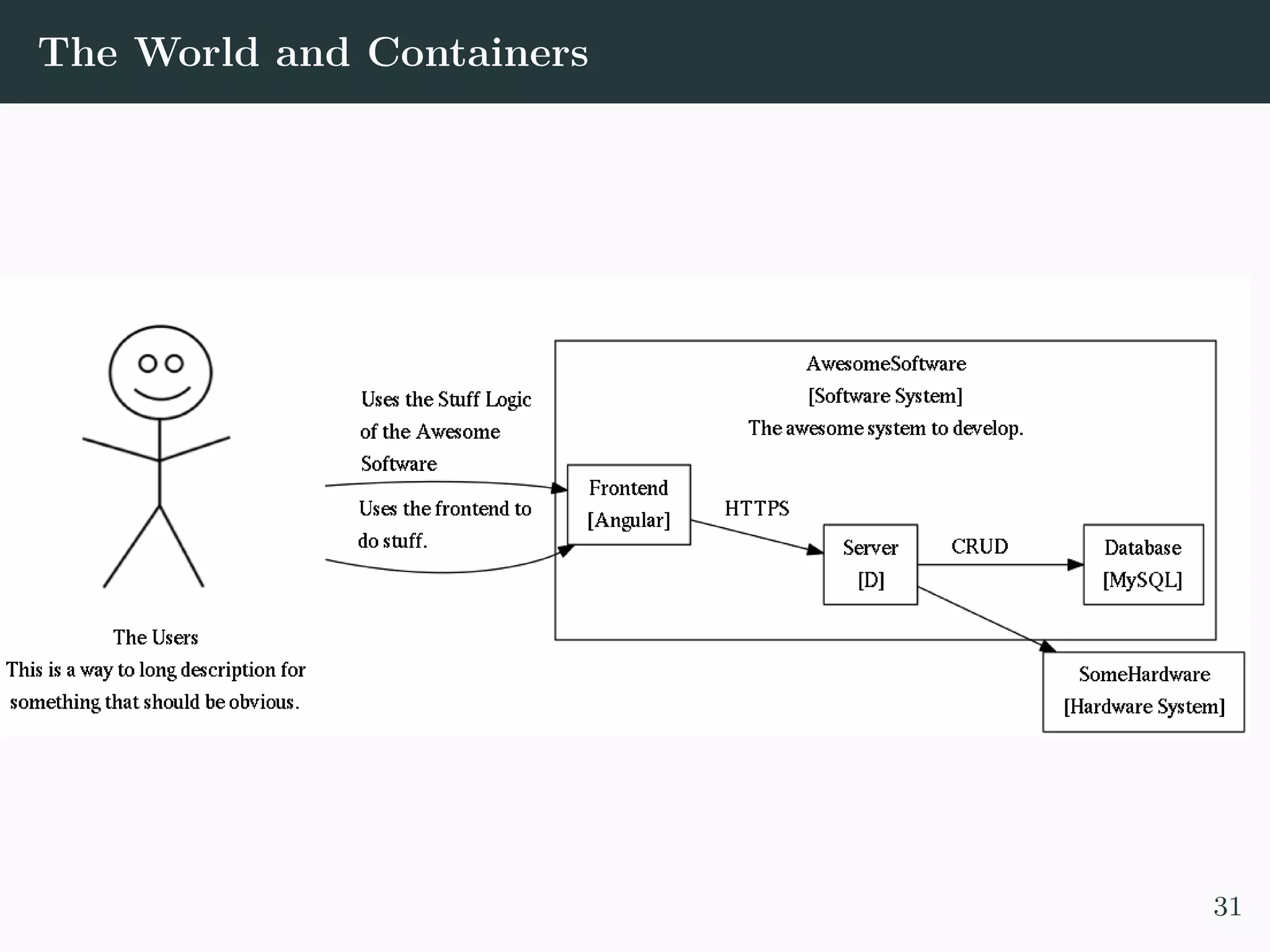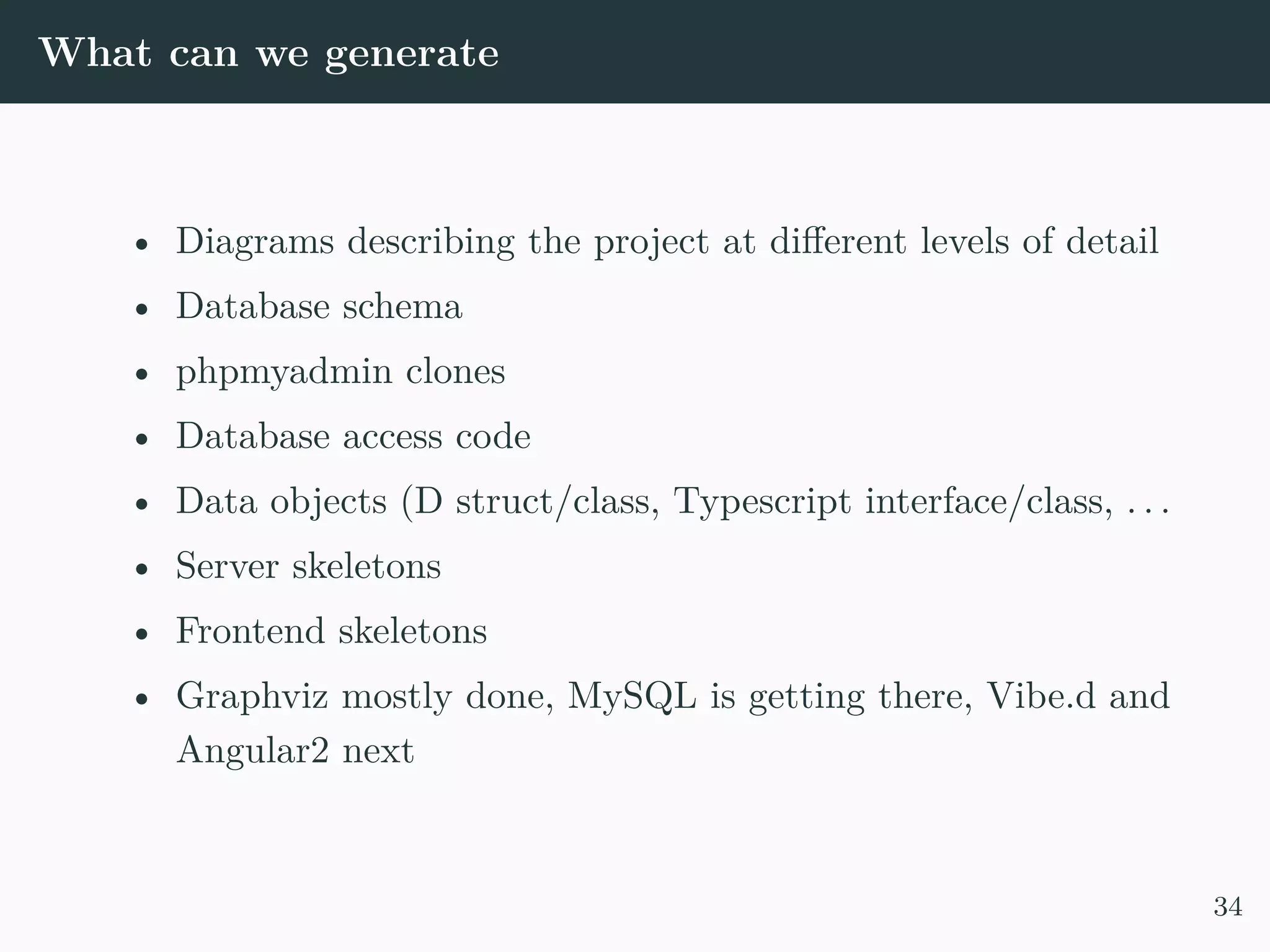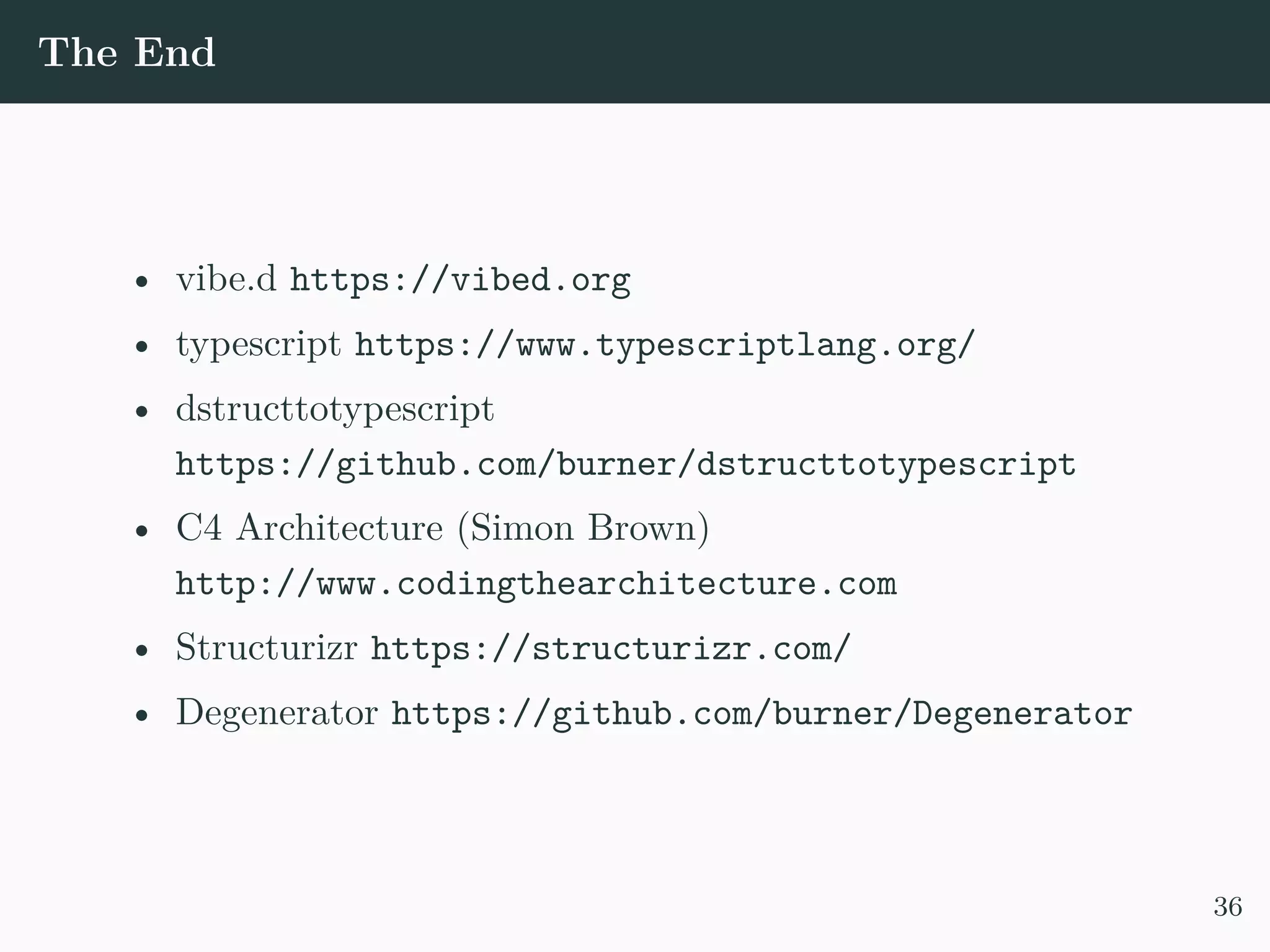The document discusses the development of asynchronous single-page applications using the D programming language, highlighting the use of vibe.d as a powerful toolkit for handling asynchronous I/O and web functionalities. It covers the integration of REST API functionalities and how to generate data models and interfaces across different layers of an application, ultimately addressing architectural concerns and the synchronization of data between the frontend, server, and database. It concludes by outlining capabilities to generate various outputs like diagrams, database schemas, and code skeletons from the unified model.




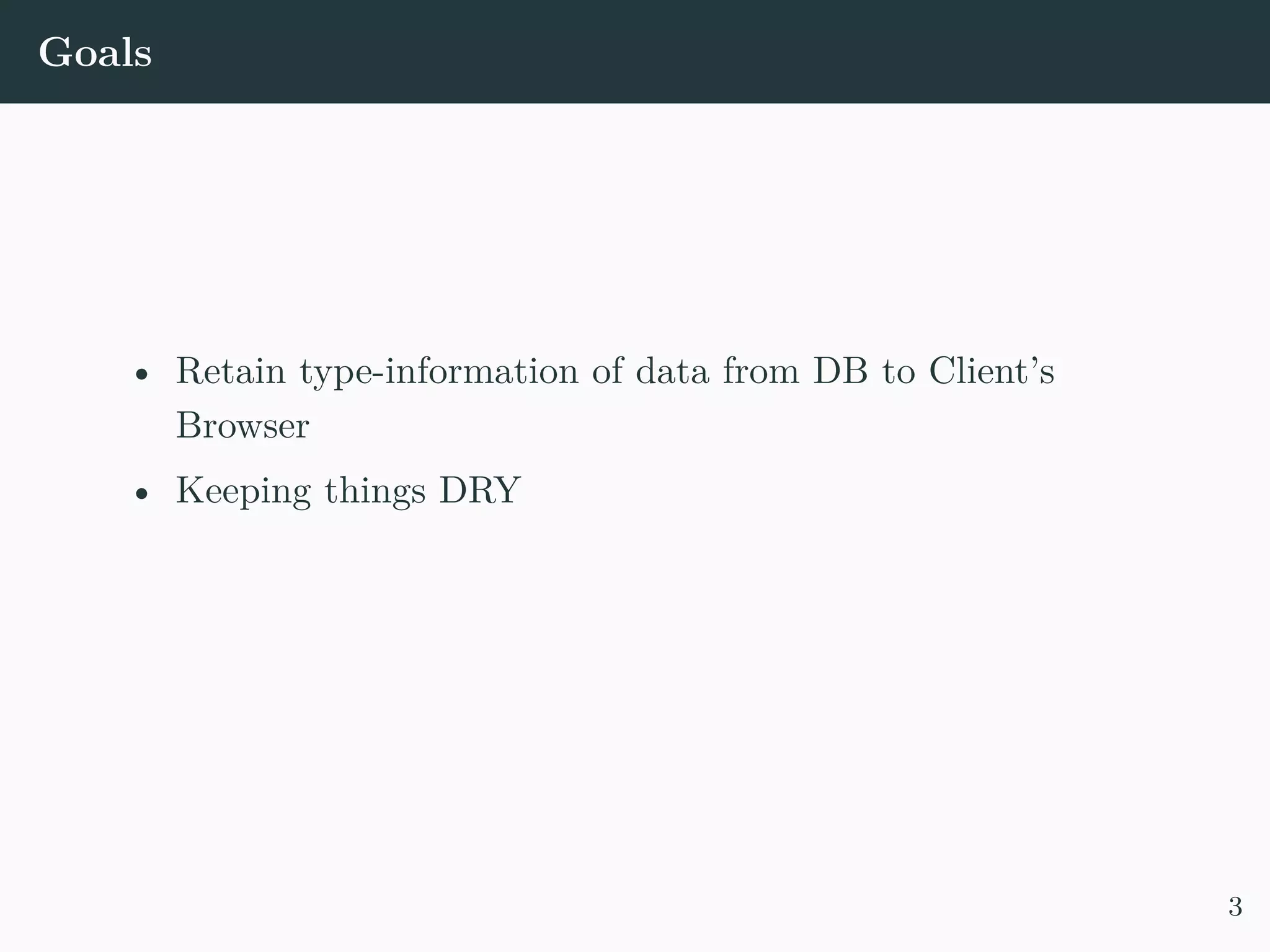
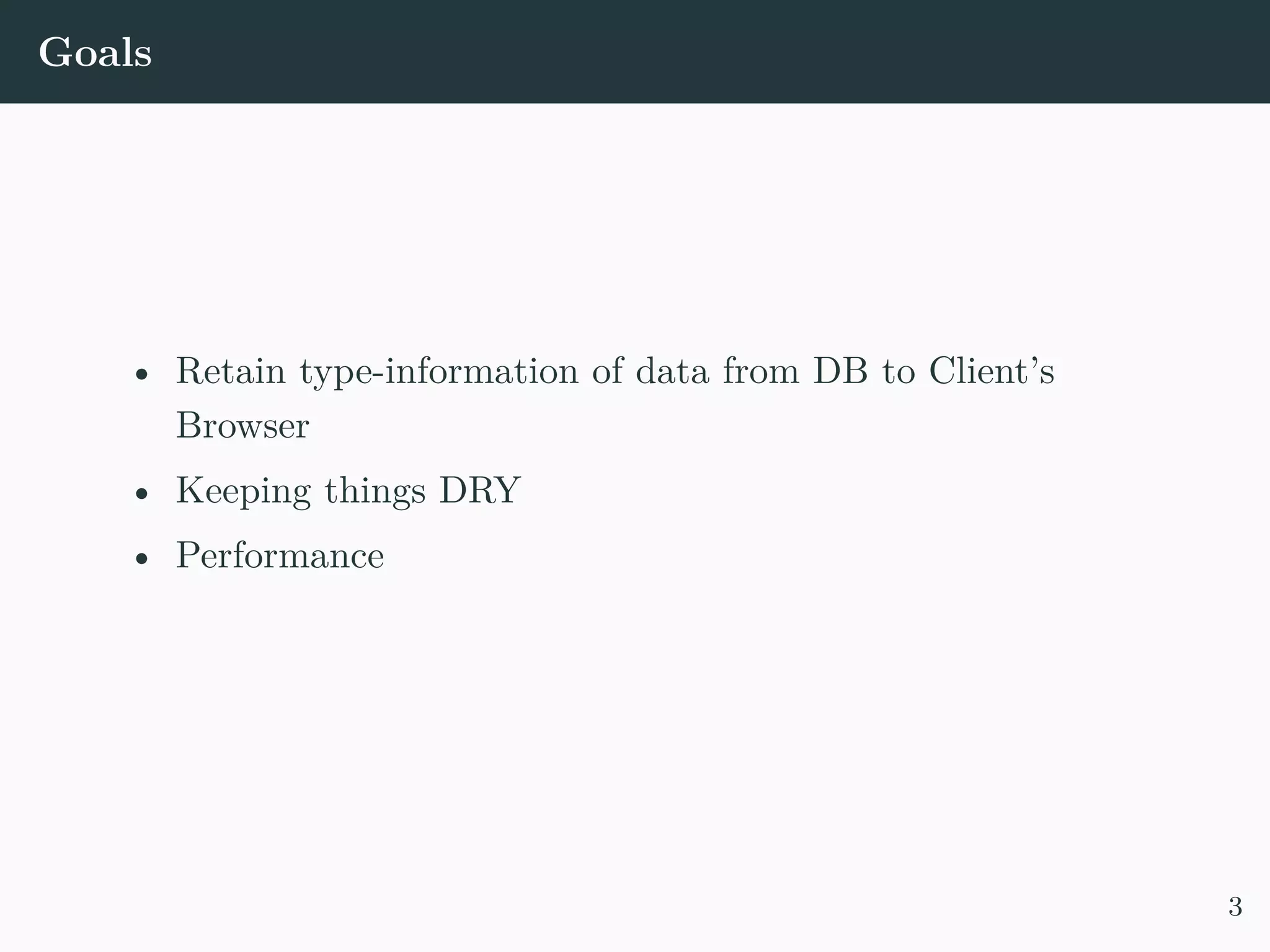



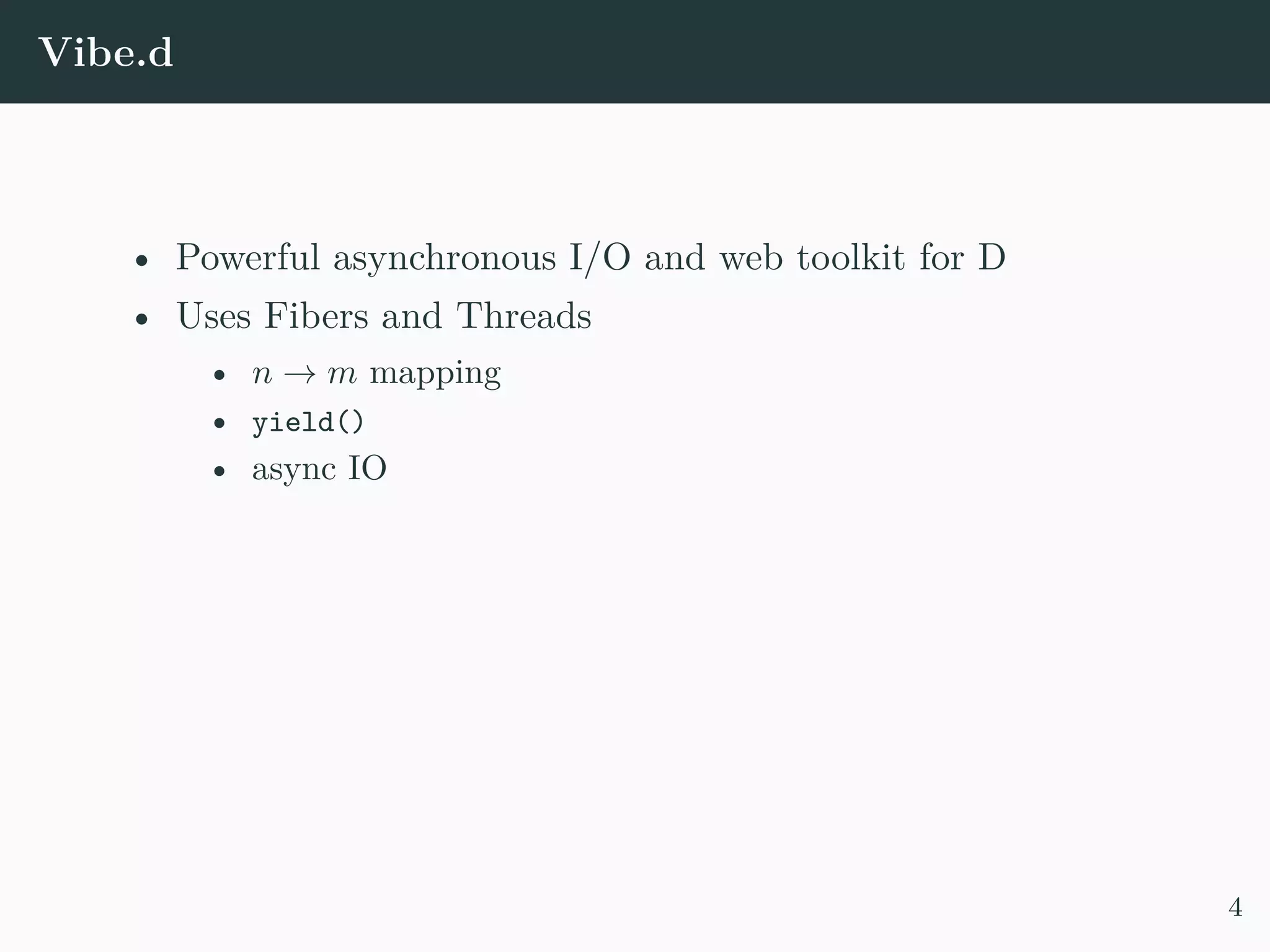

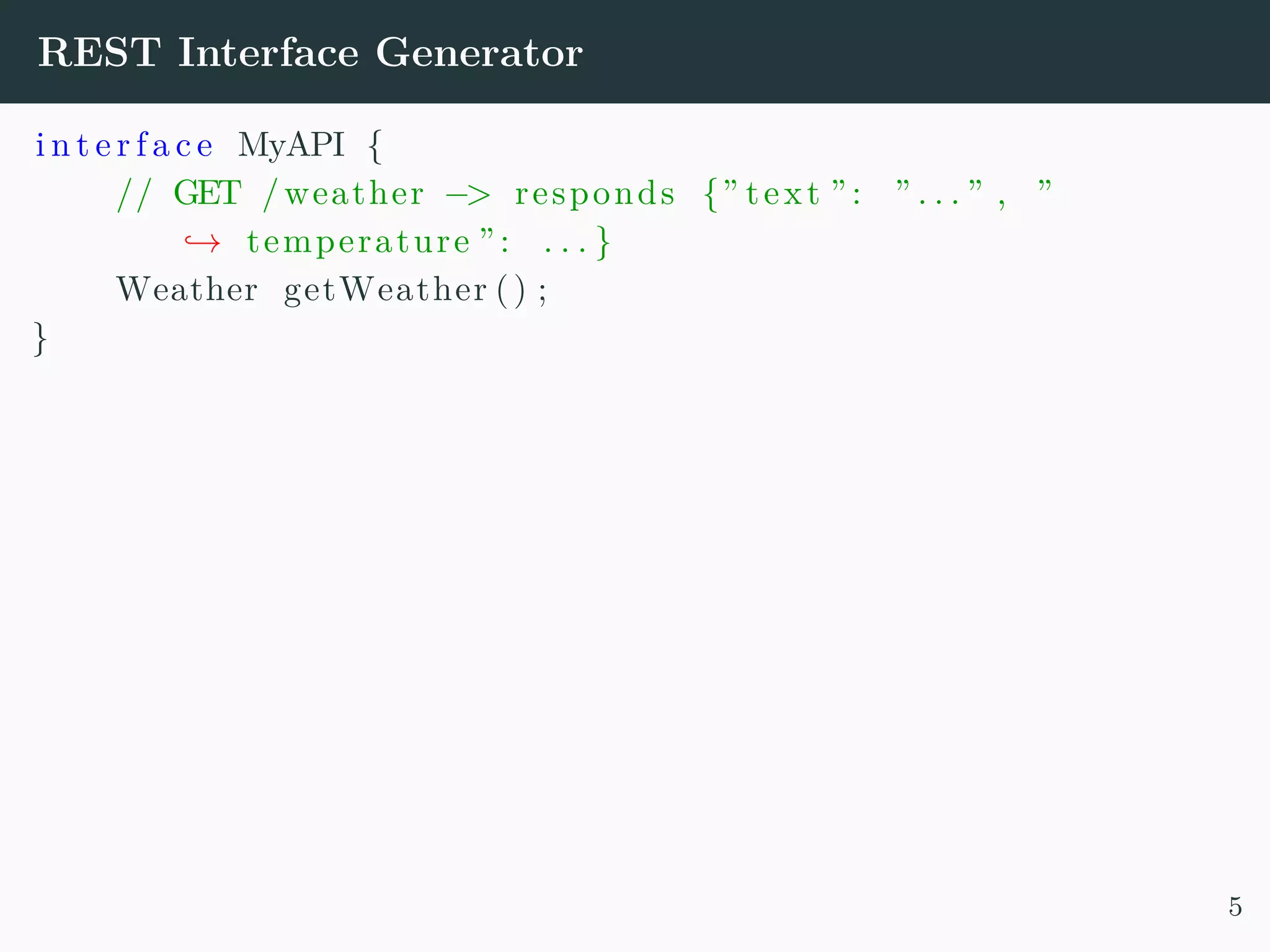
![REST Interface Generator i n t e r f a c e MyAPI { // GET /weather −> responds {” text ”: ” . . . ” , ” → temperature ”: . . . } Weather getWeather () ; } c l a s s MyAPIImplementation : MyAPI { auto weather = [ ”sunny” , ” rainy ” , ” cats and dogs ” → , ”snow” ] ; Weather getWeather () { return Weather ( weather [ uniform (0 , weather . length ) ] , uniform ( −10 ,30) ) ; } } 5](https://image.slidesharecdn.com/spa-160505111736/75/Asynchronous-single-page-applications-without-a-line-of-HTML-or-Javascript-or-why-D-is-just-awesome-13-2048.jpg)
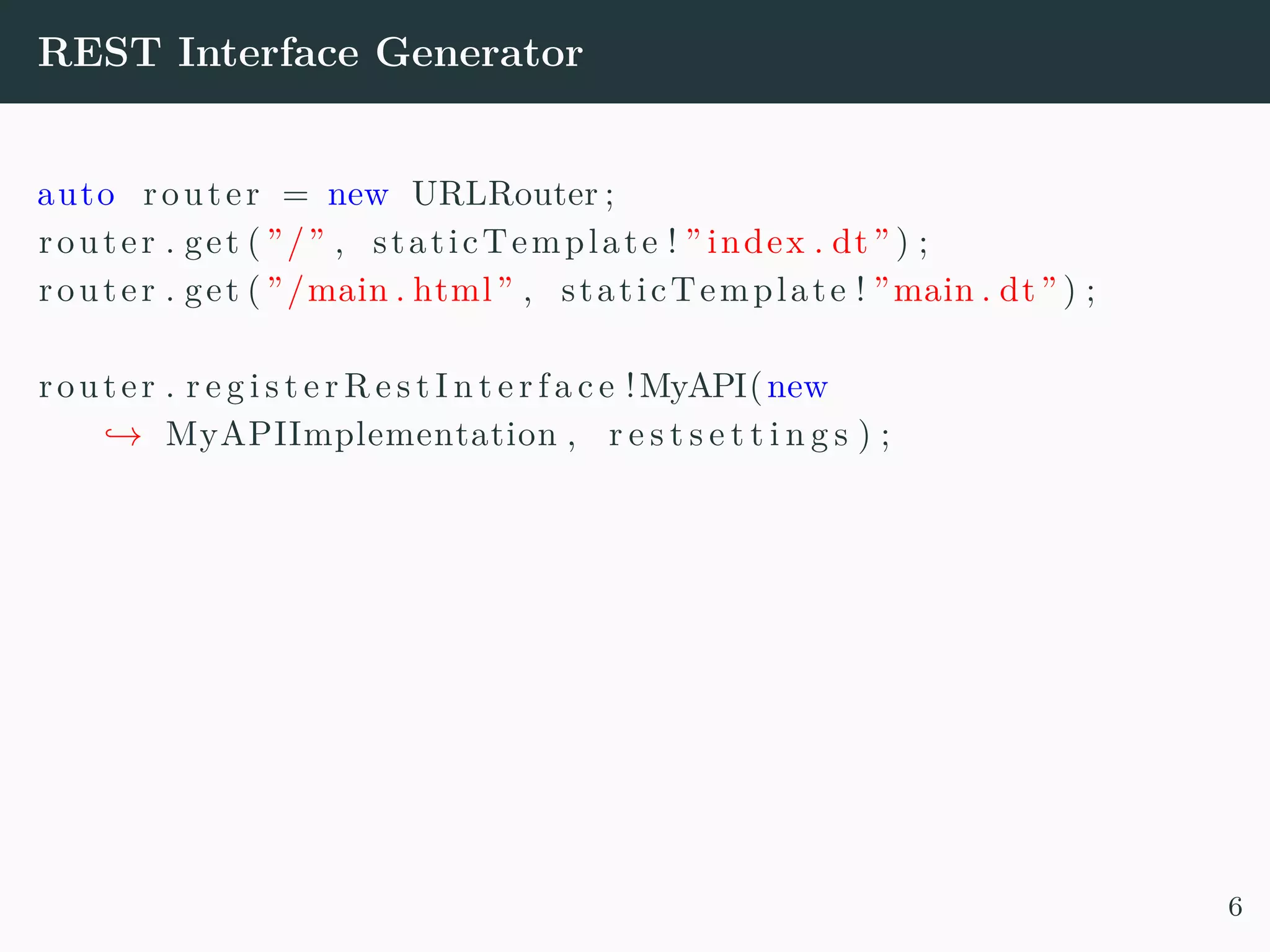
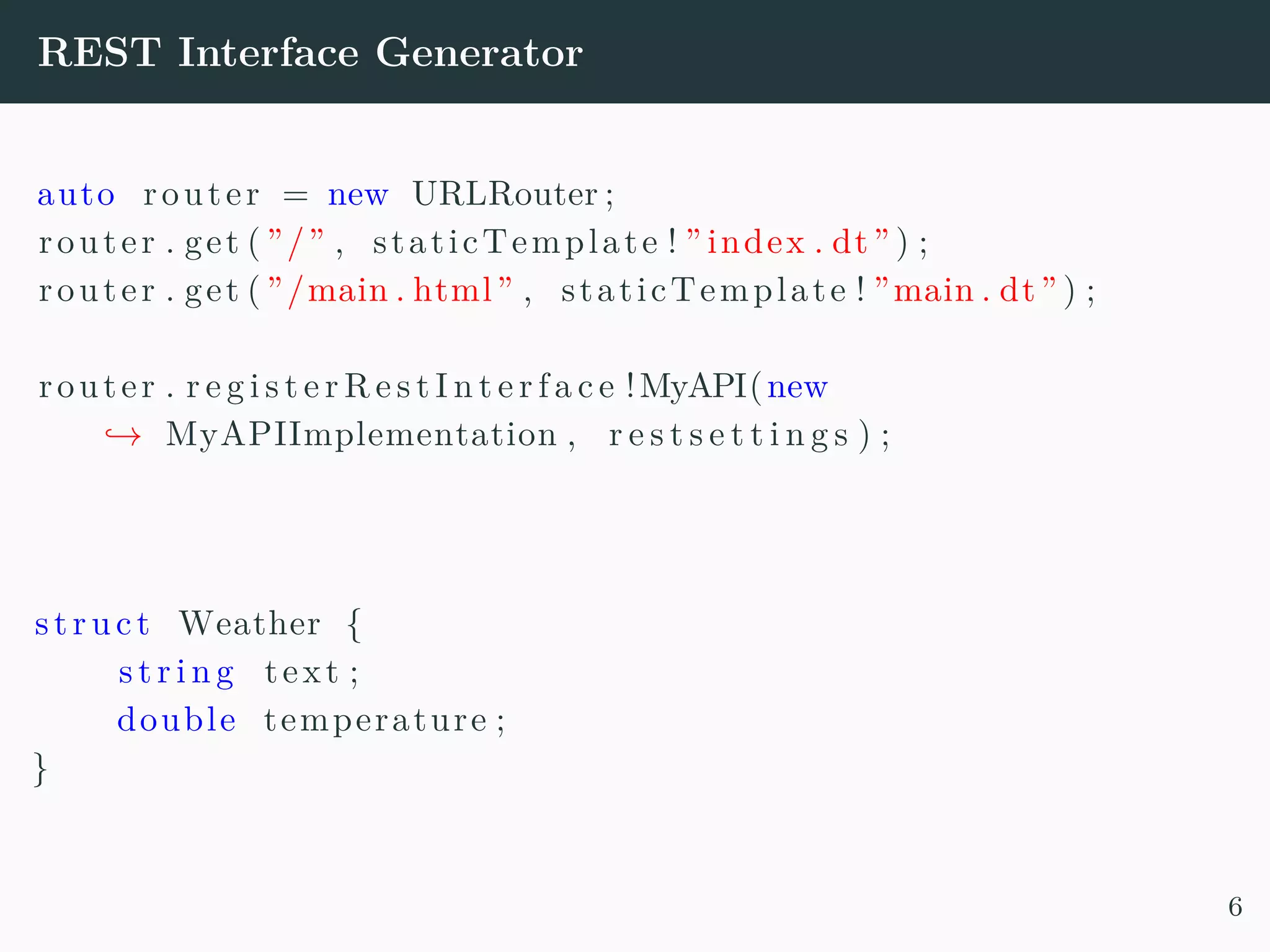
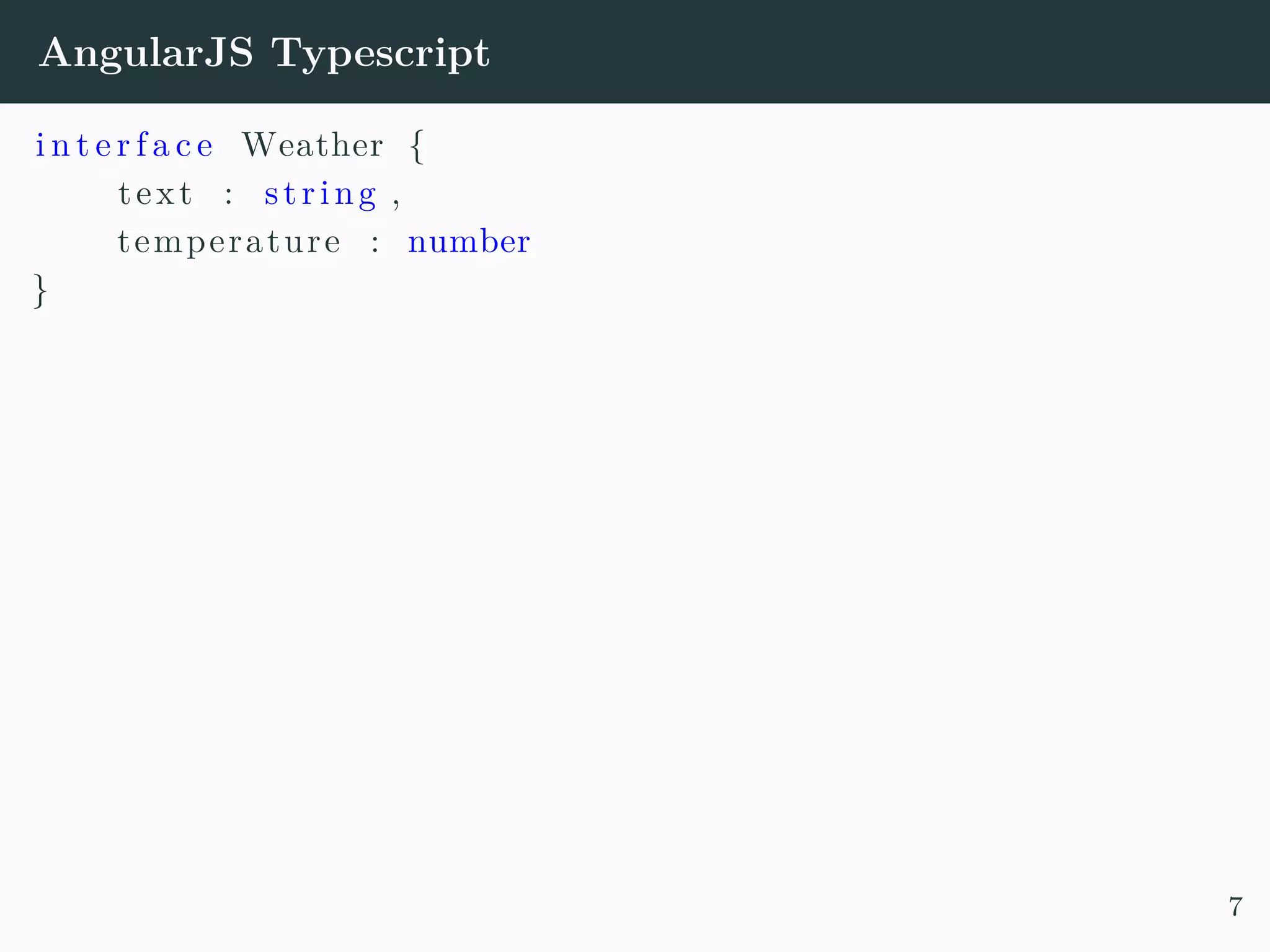
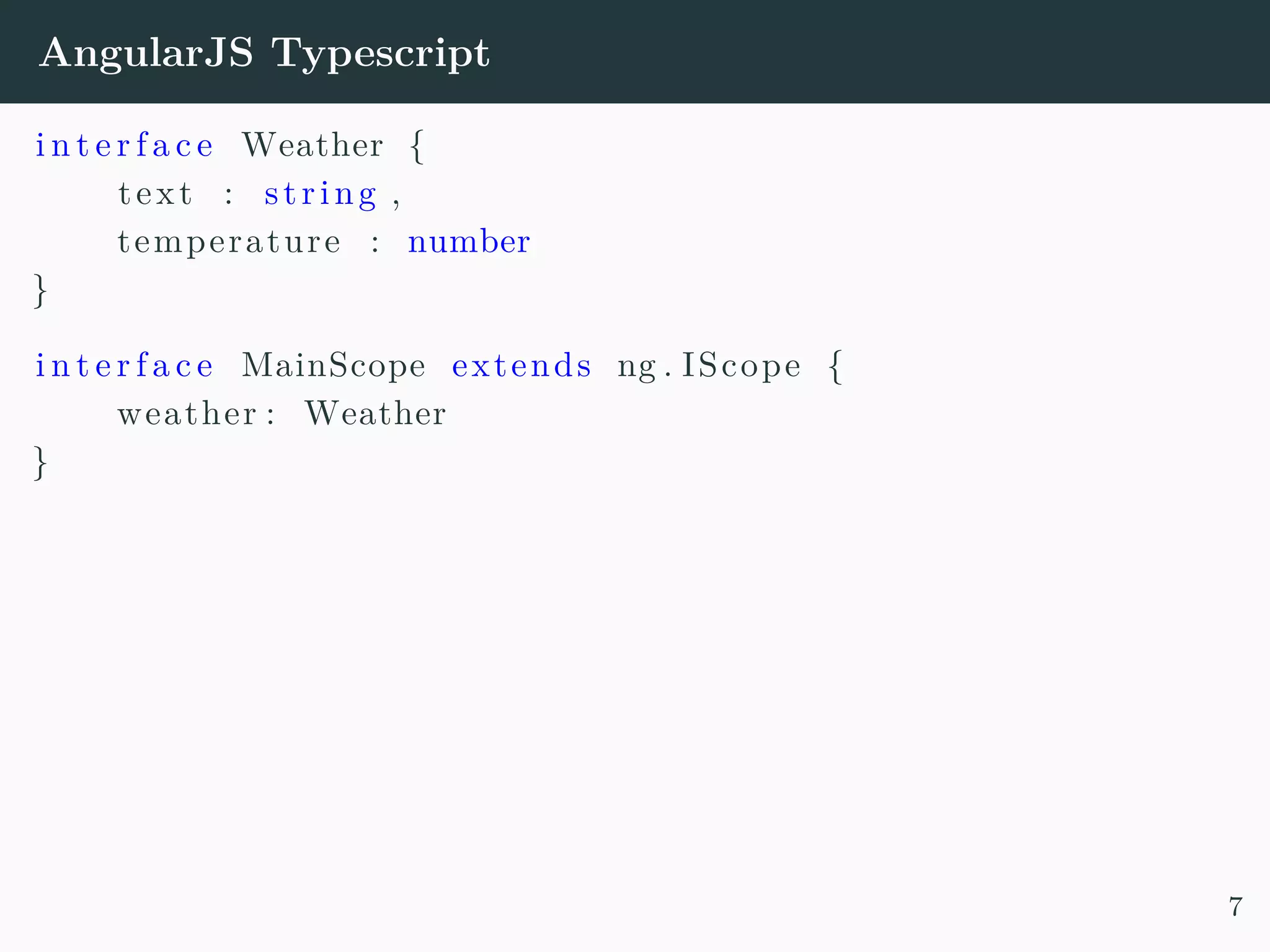
![AngularJS Typescript i n t e r f a c e Weather { text : string , temperature : number } i n t e r f a c e MainScope extends ng . IScope { weather : Weather } c l a s s MainCtrl { public s t a t i c $ i n j e c t = [ ’ $scope ’ , ’ $http ’ ] ; constructor ( private $scope : MainScope , private $http : ng . IHttpService ) { t h i s . weather () ; } 7](https://image.slidesharecdn.com/spa-160505111736/75/Asynchronous-single-page-applications-without-a-line-of-HTML-or-Javascript-or-why-D-is-just-awesome-18-2048.jpg)

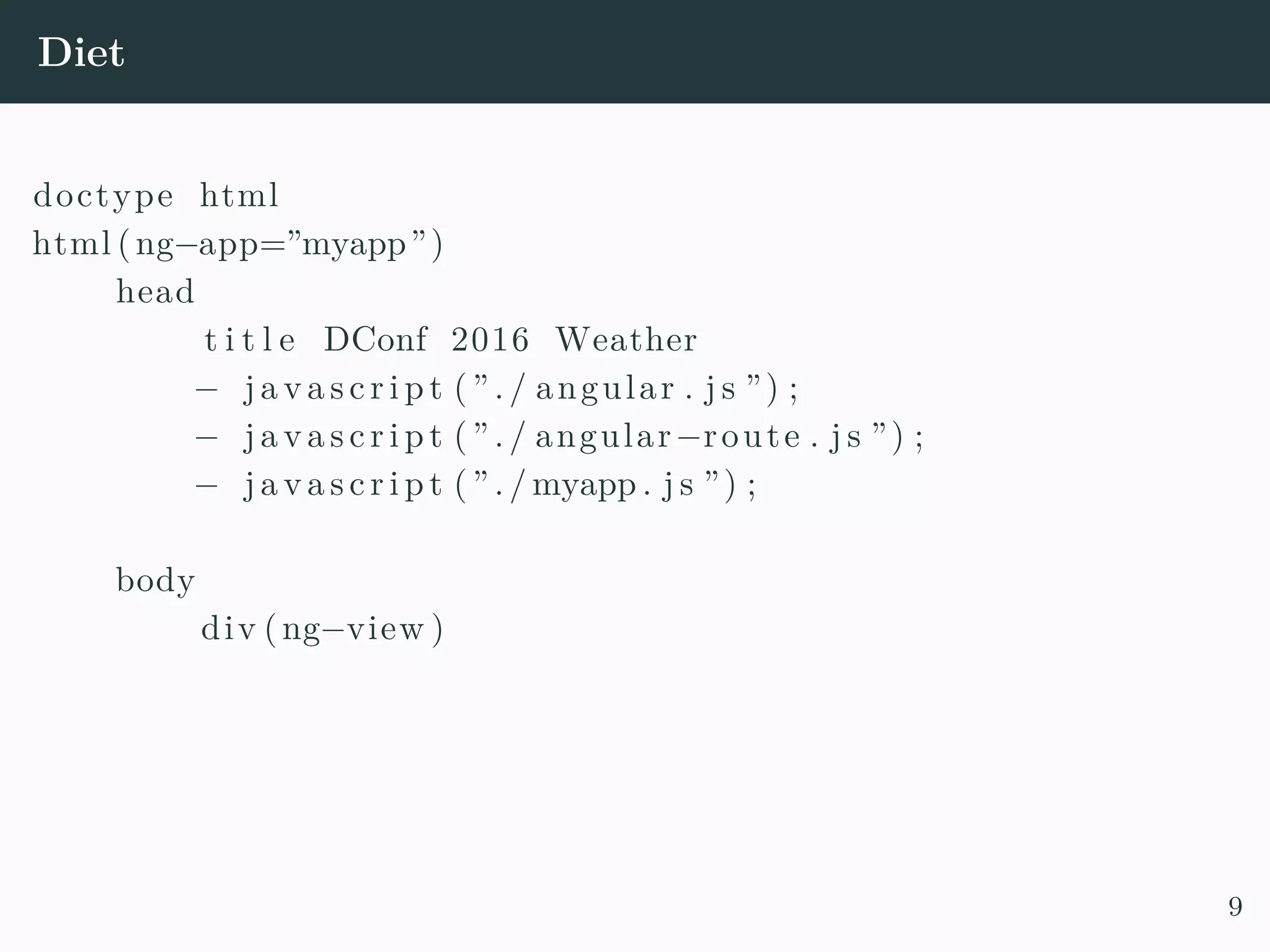

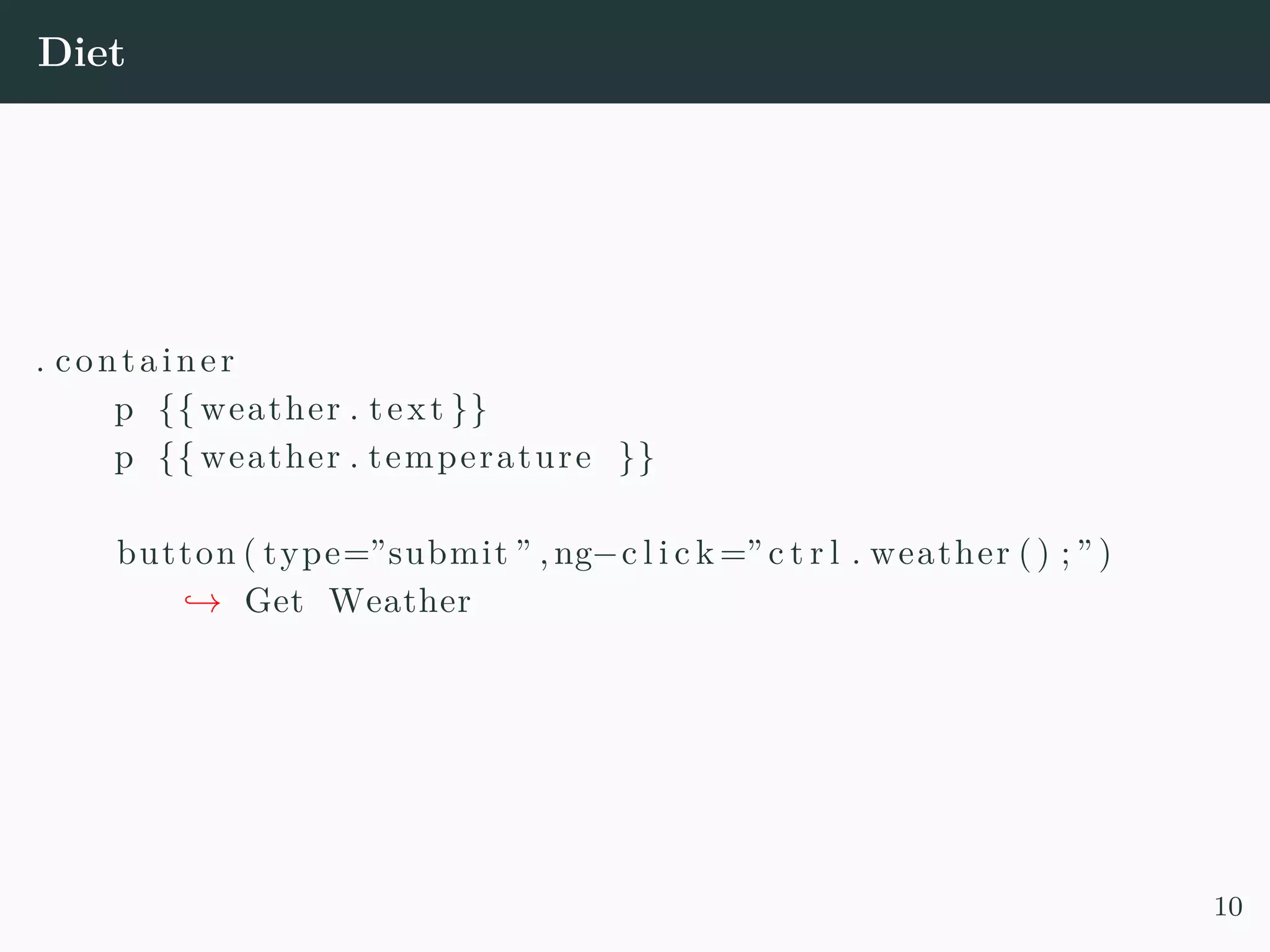


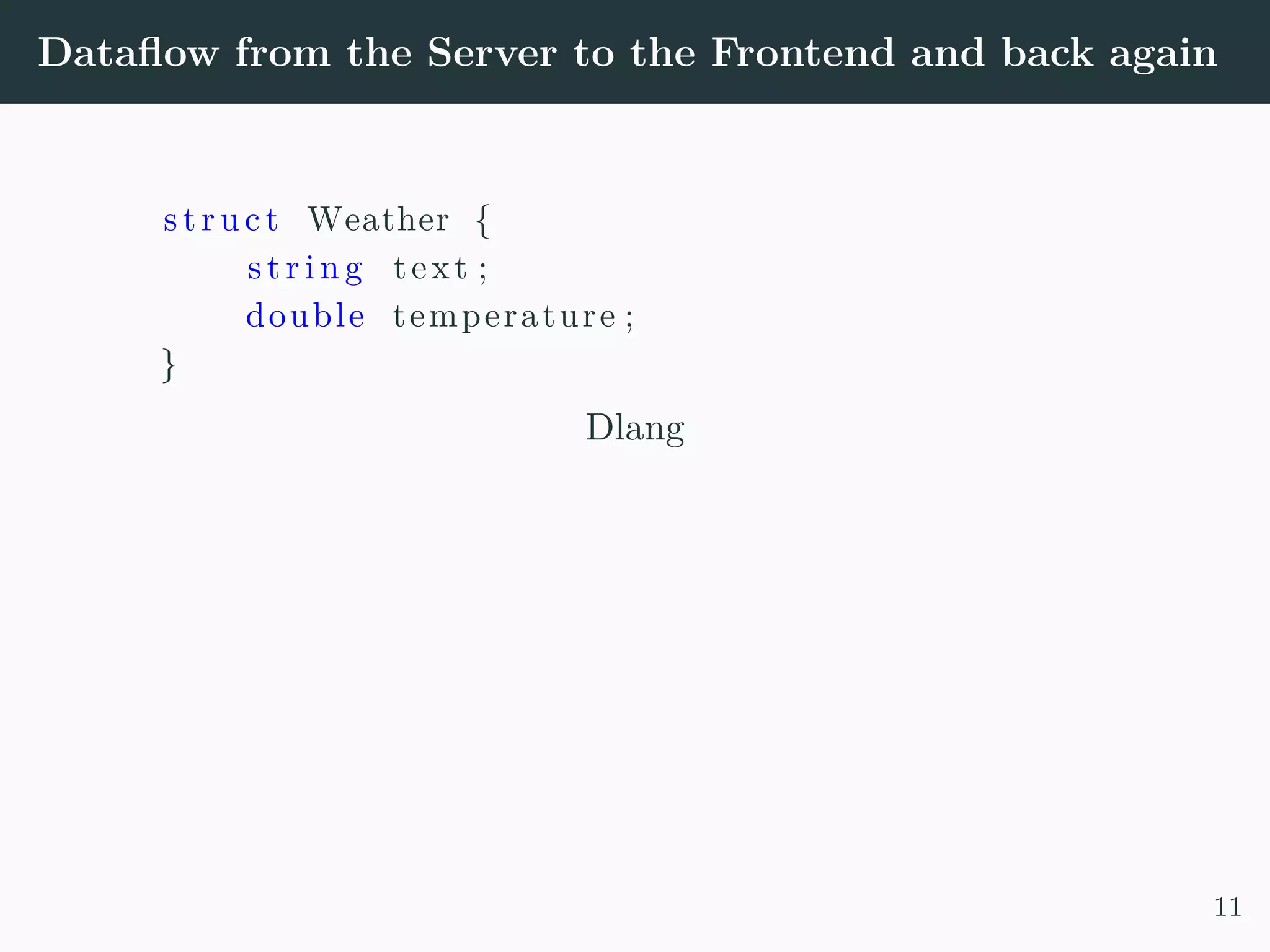
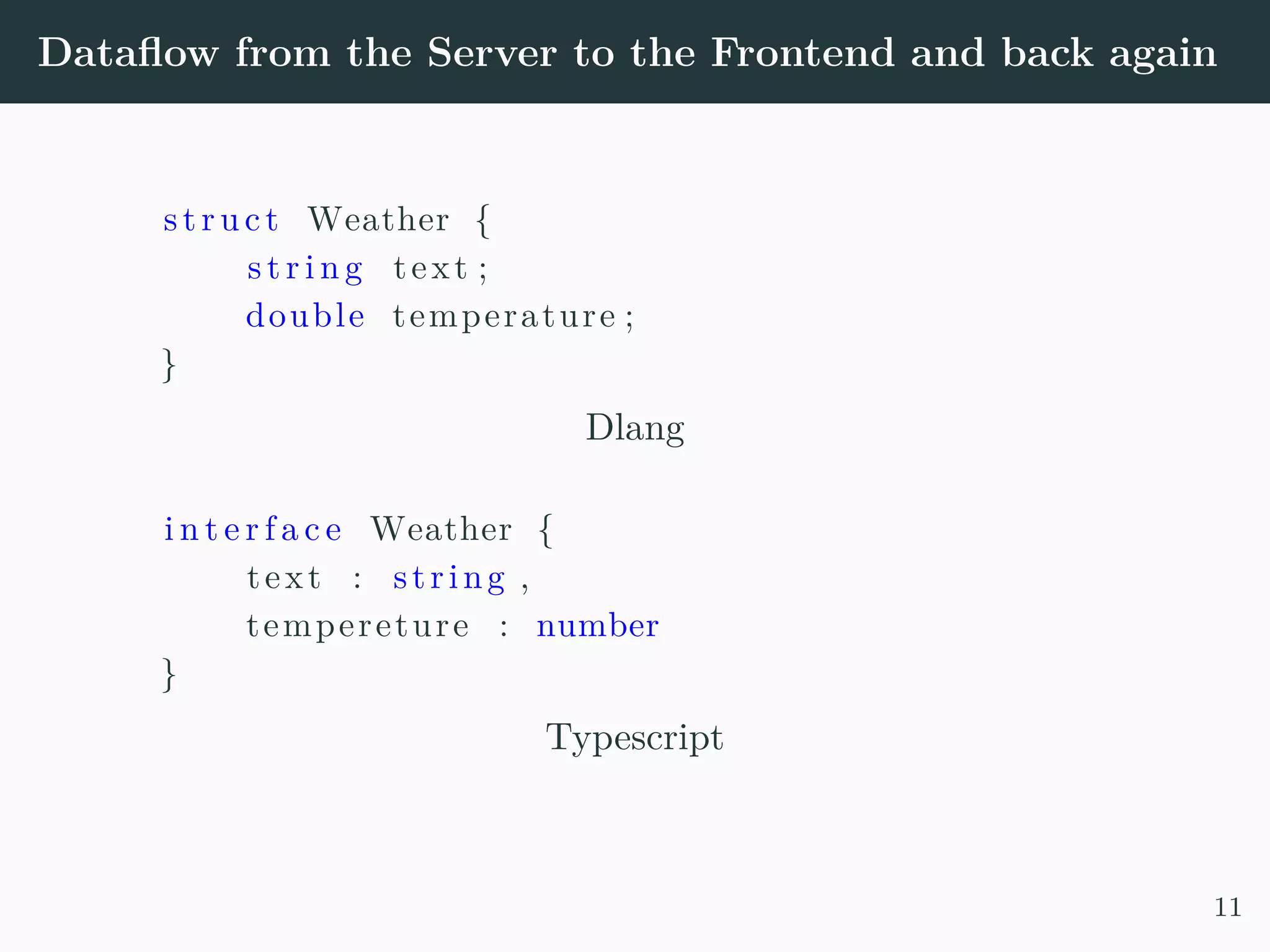
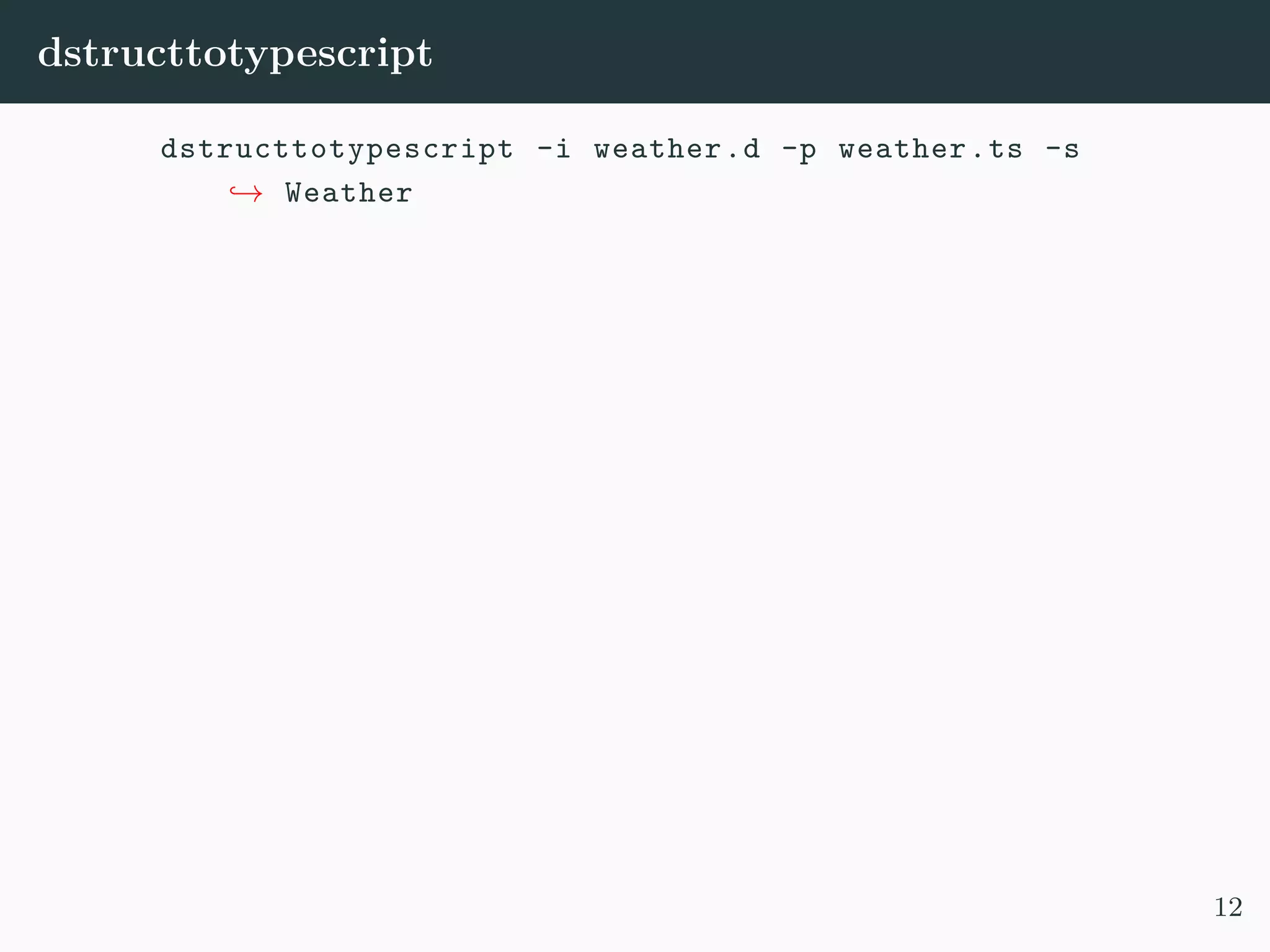


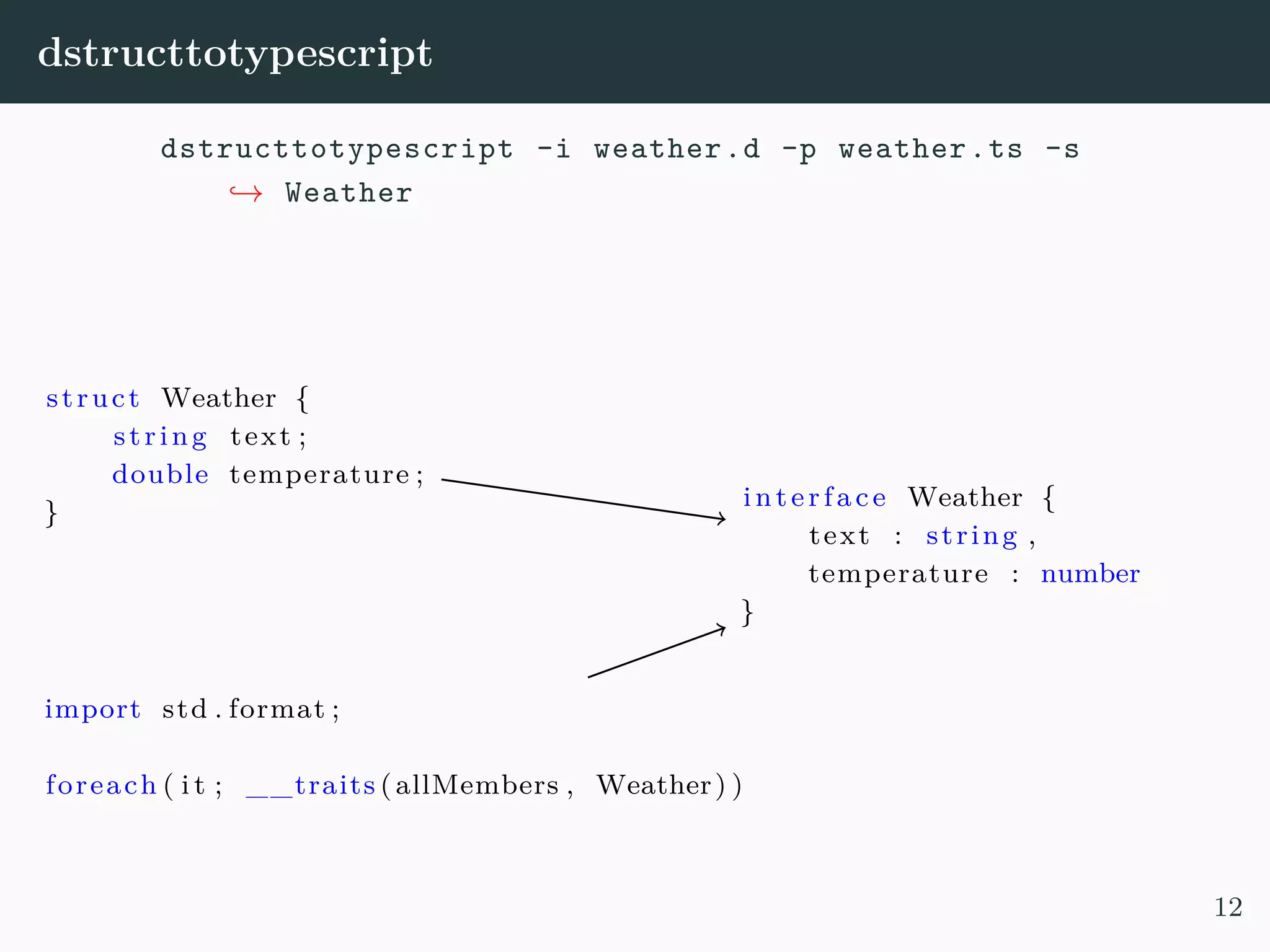


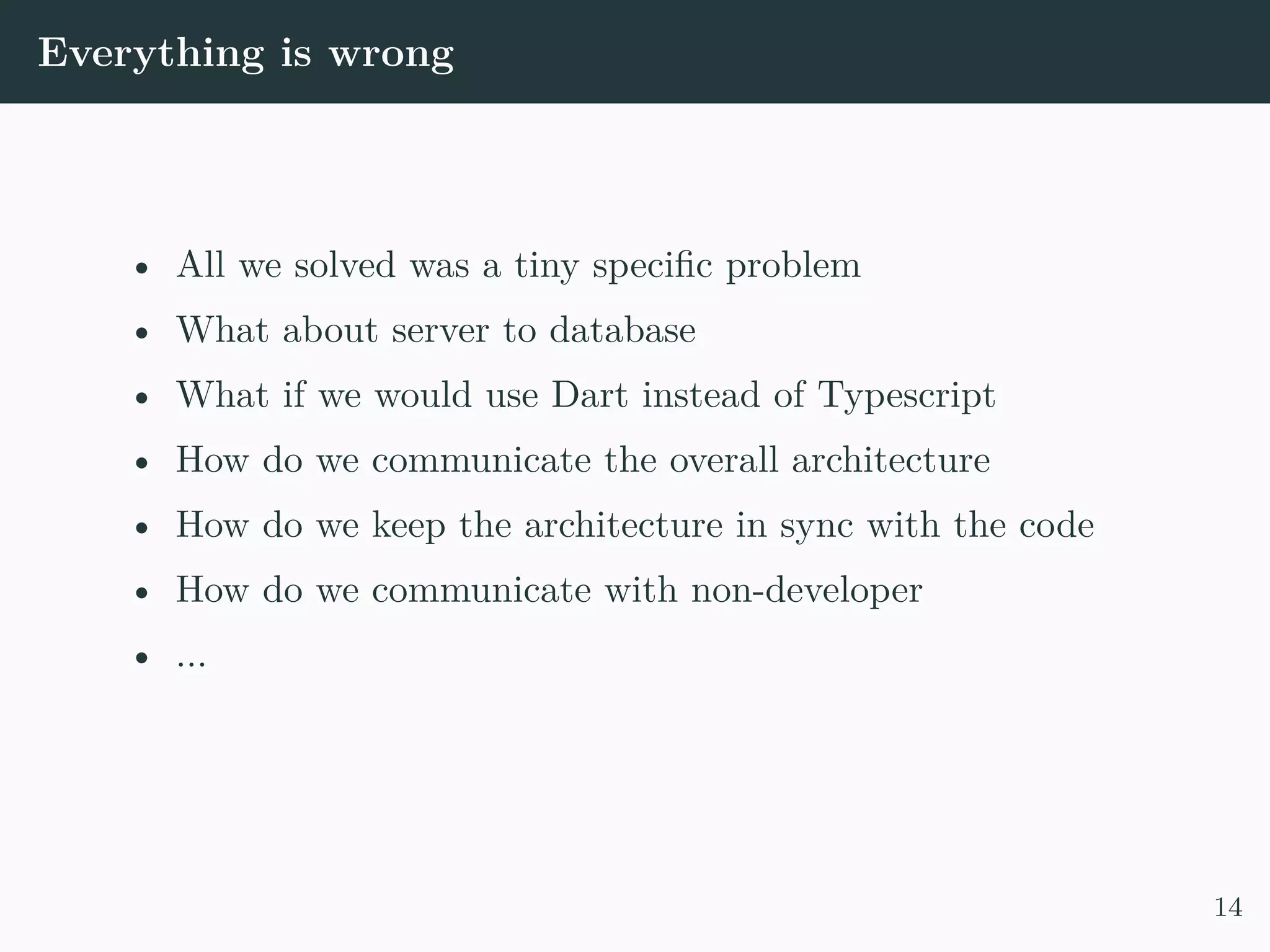


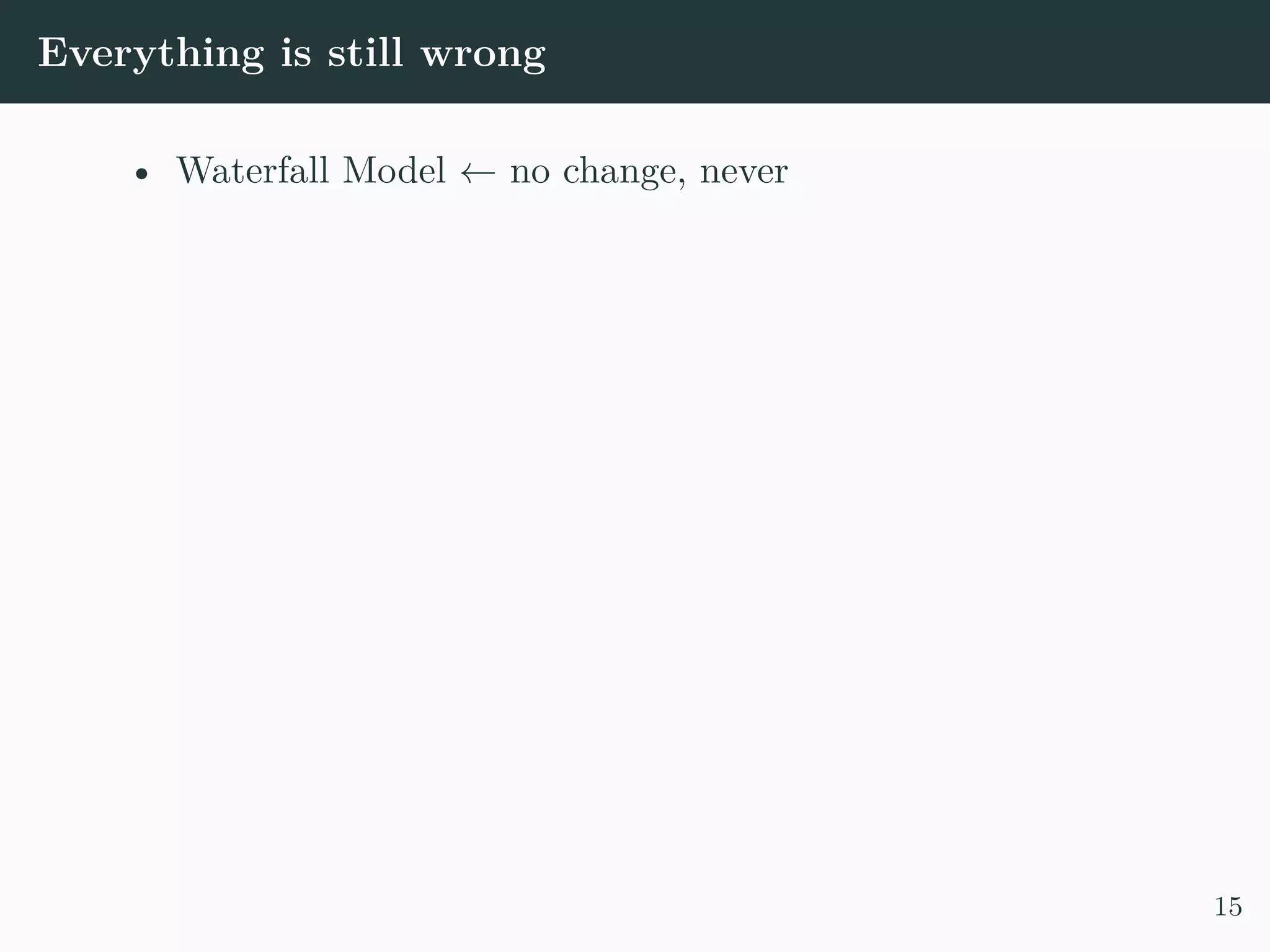

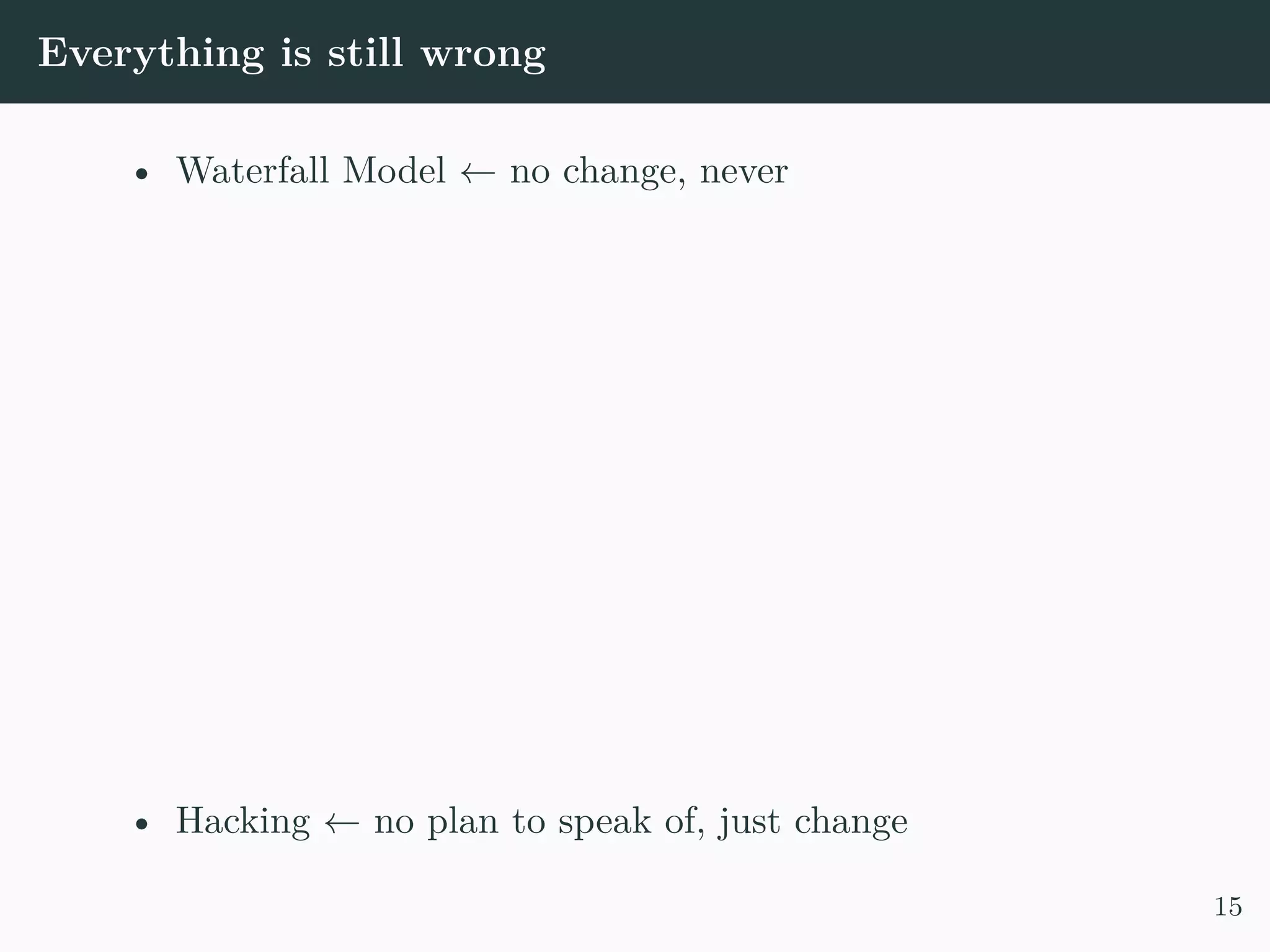
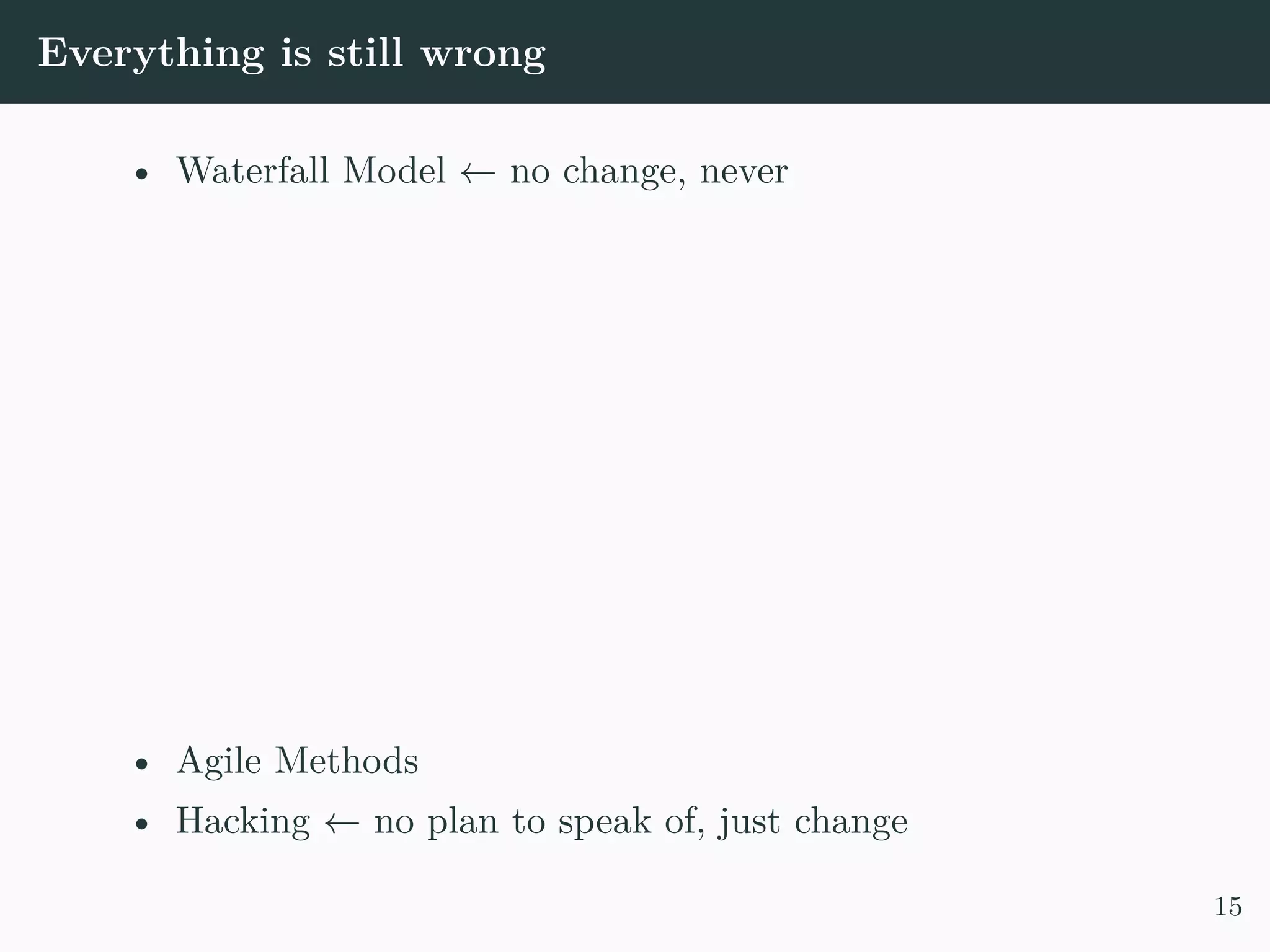
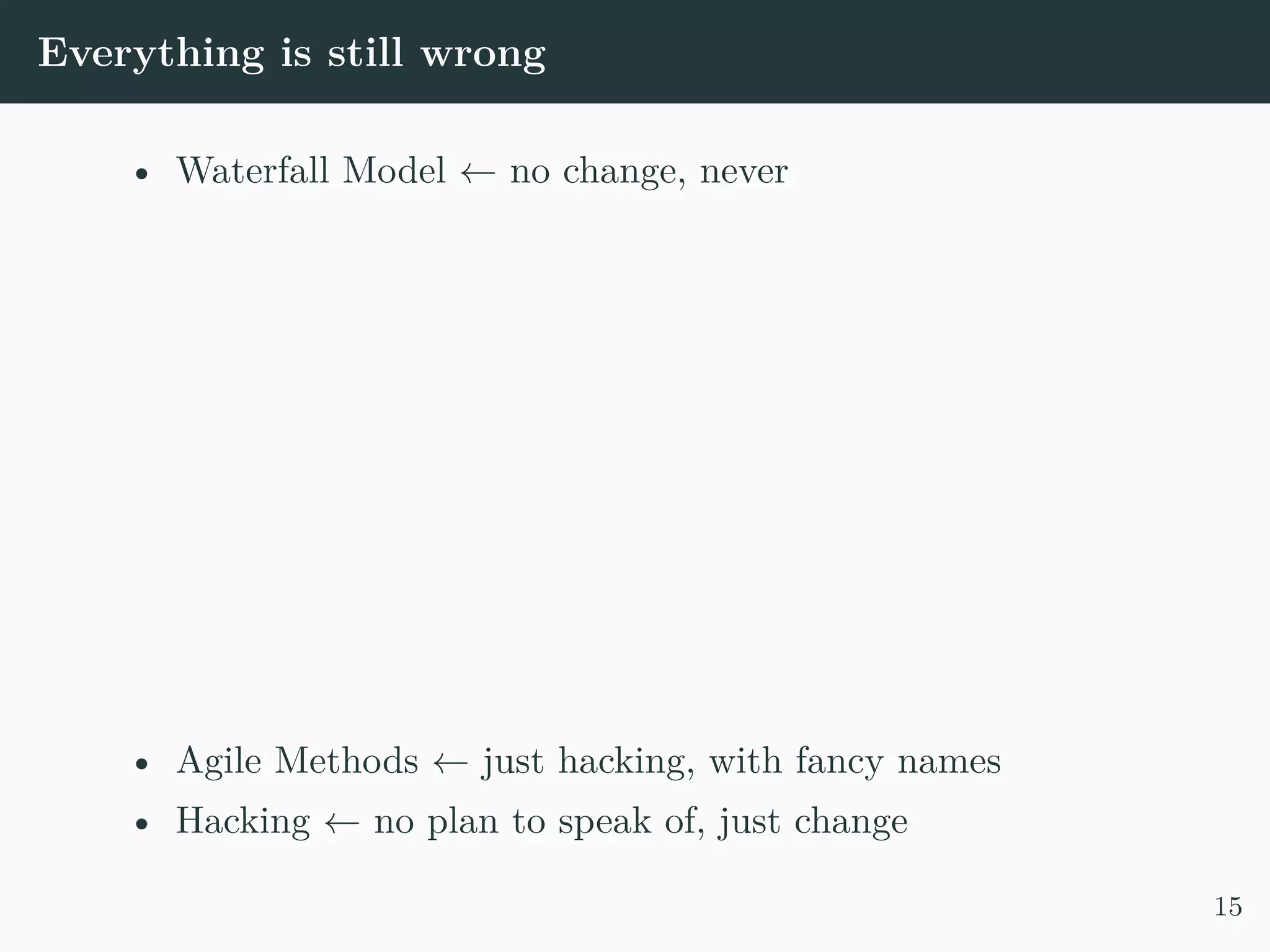
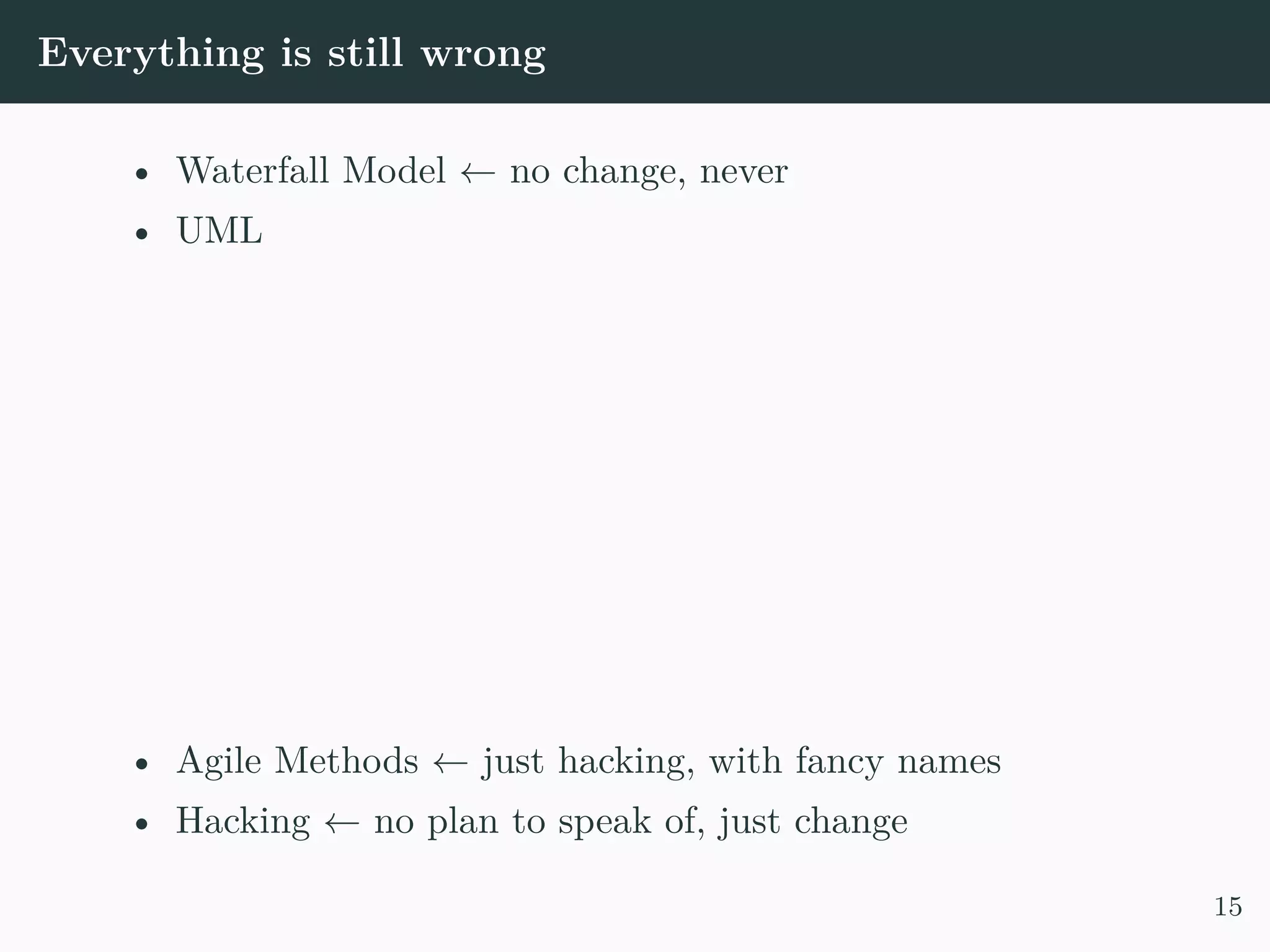
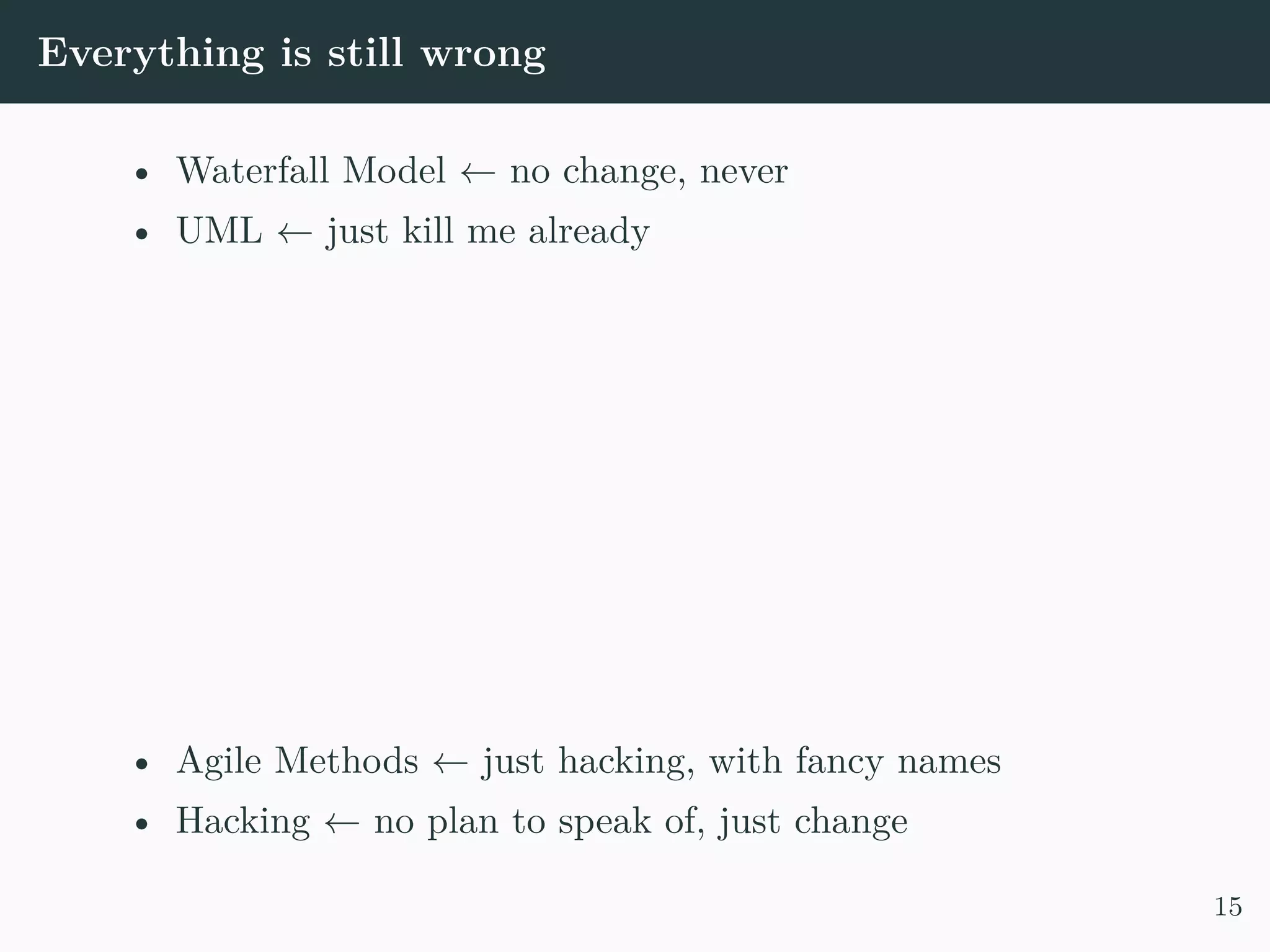
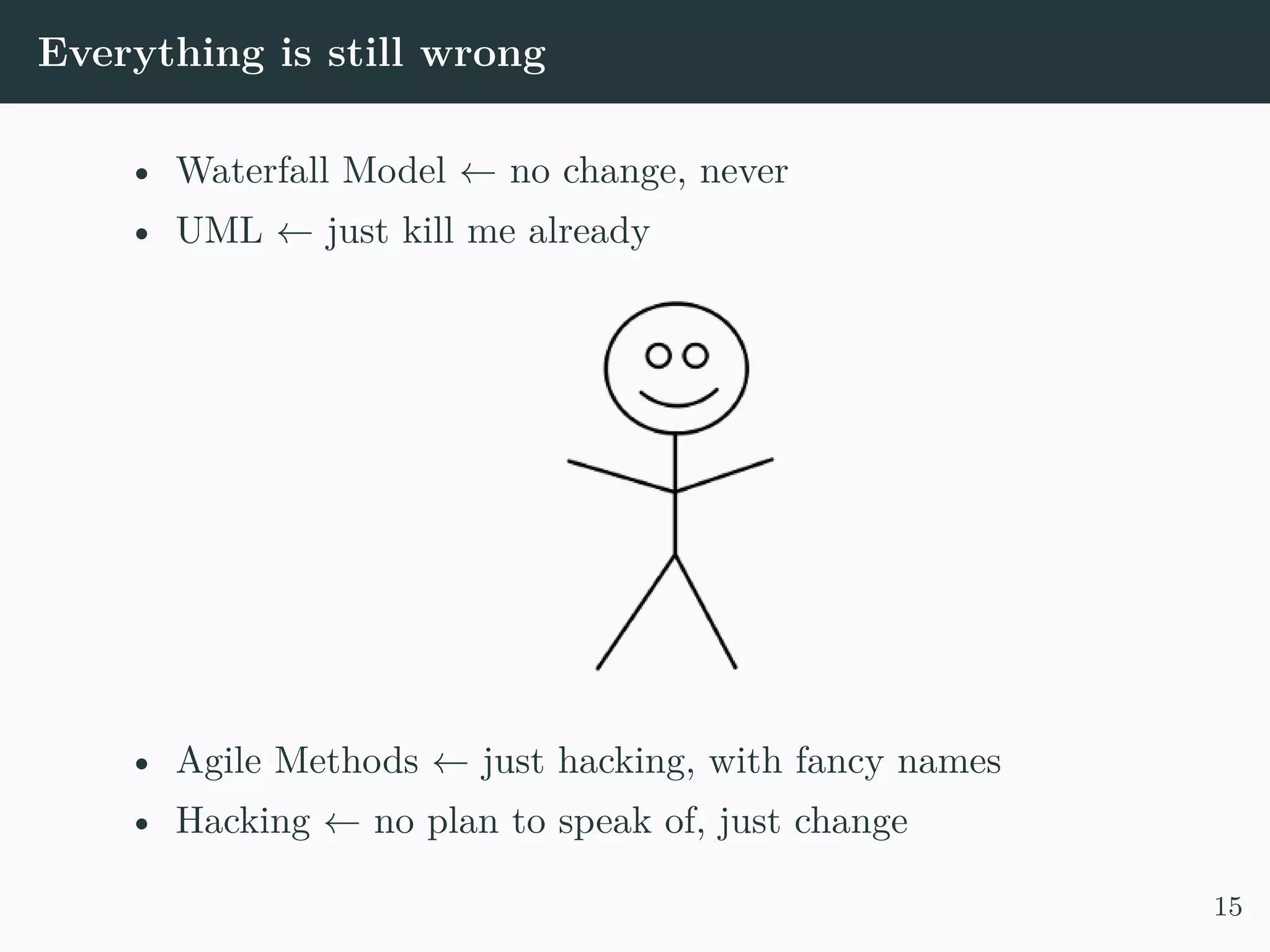
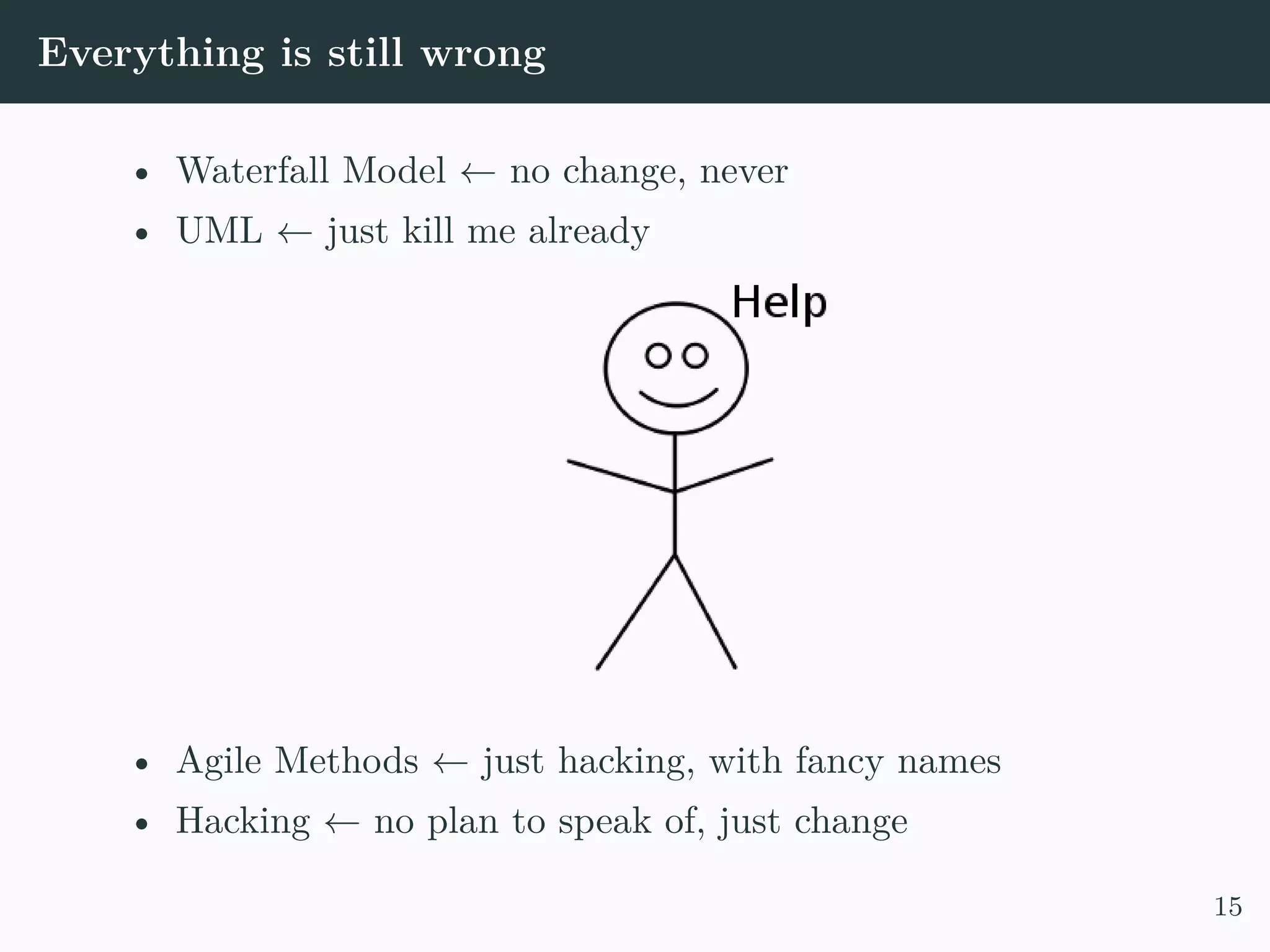
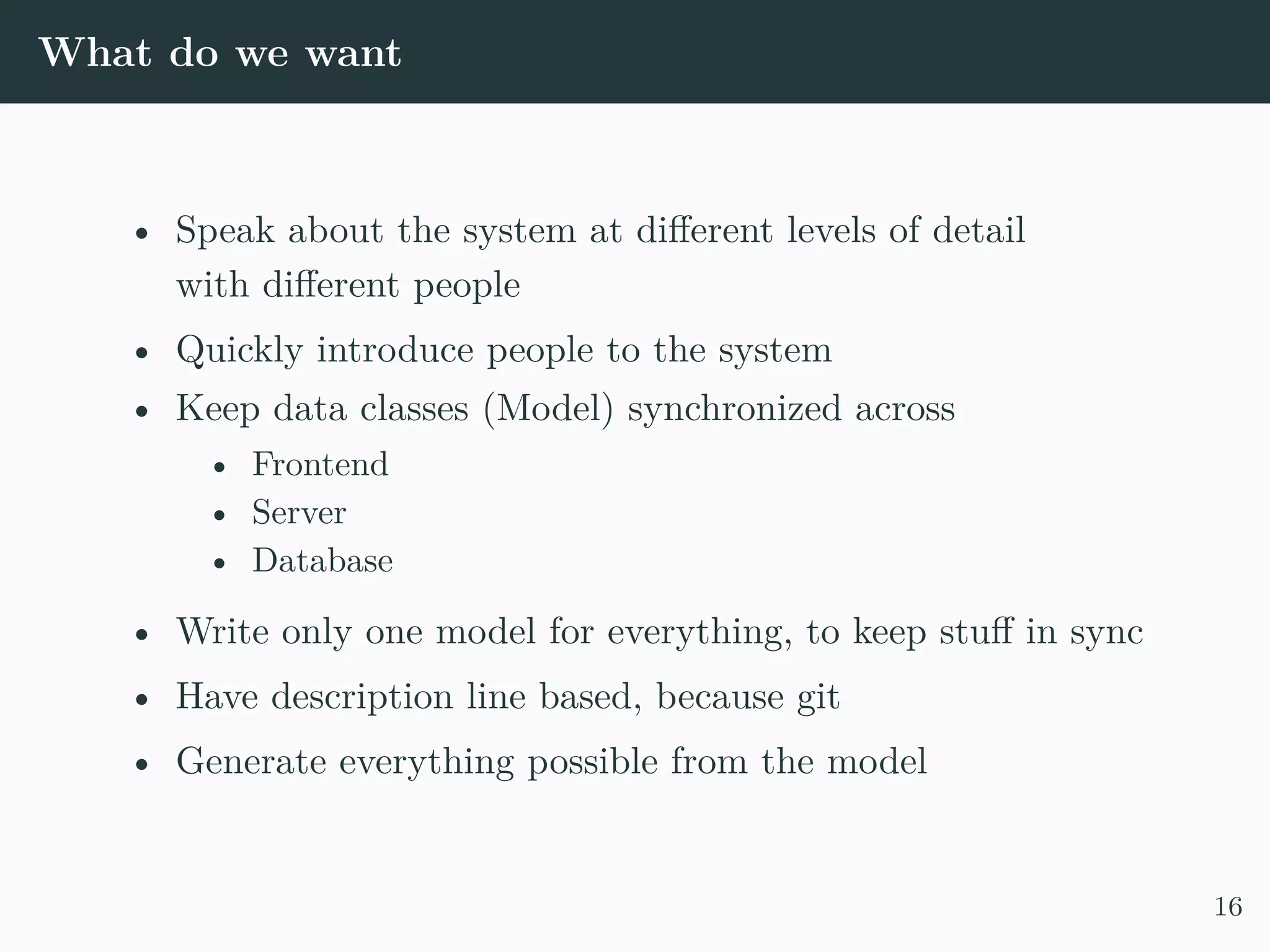
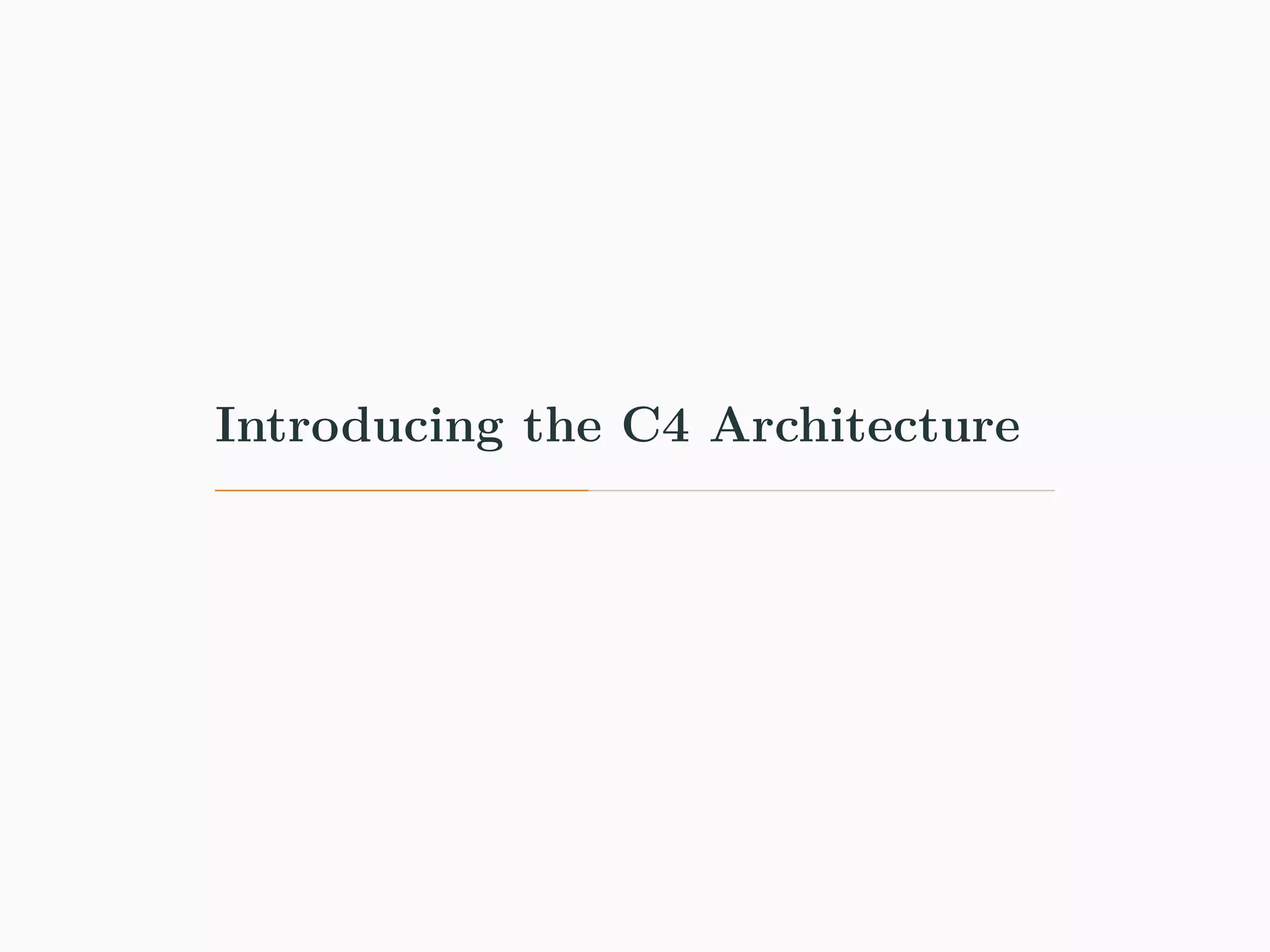


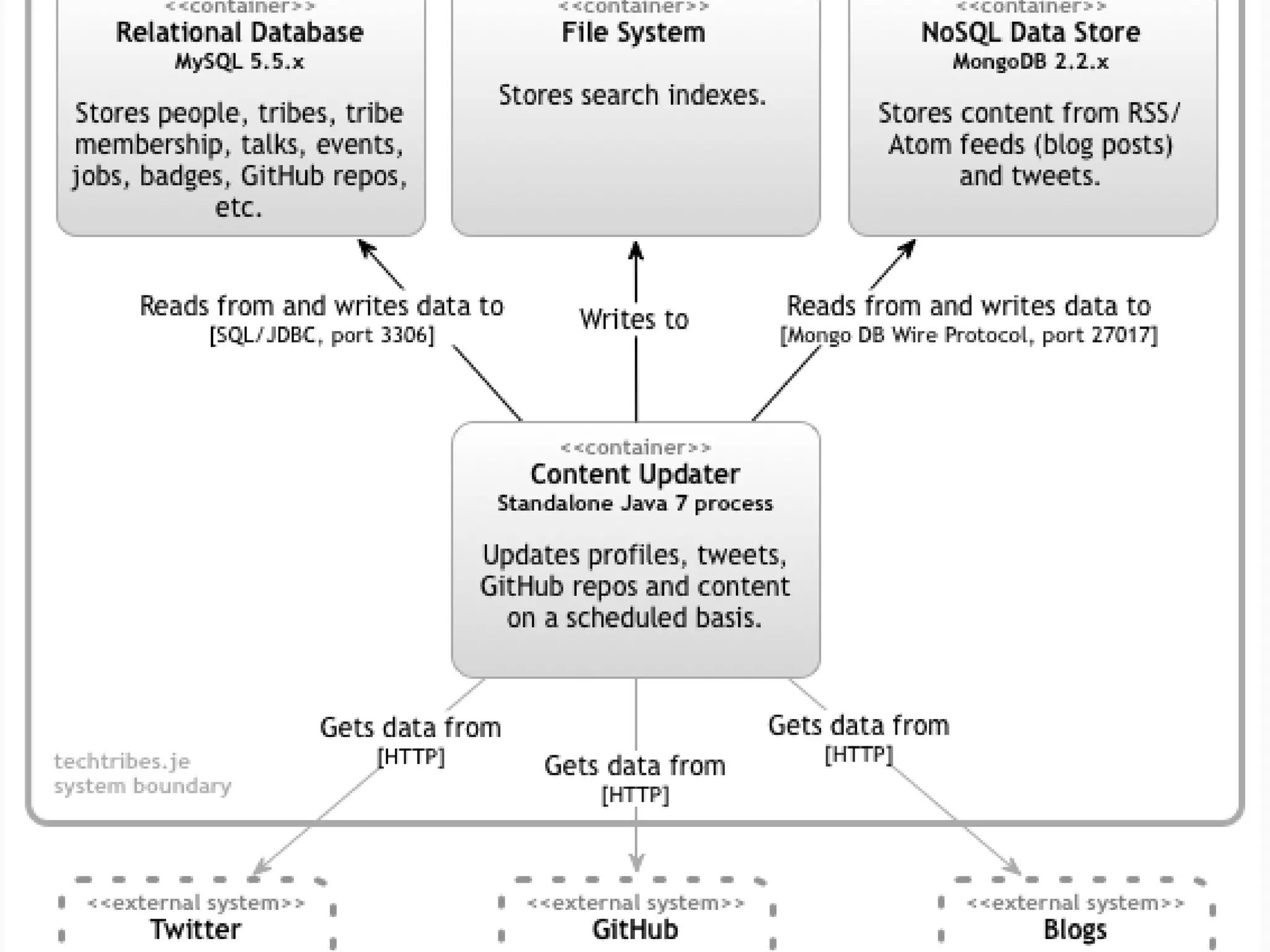
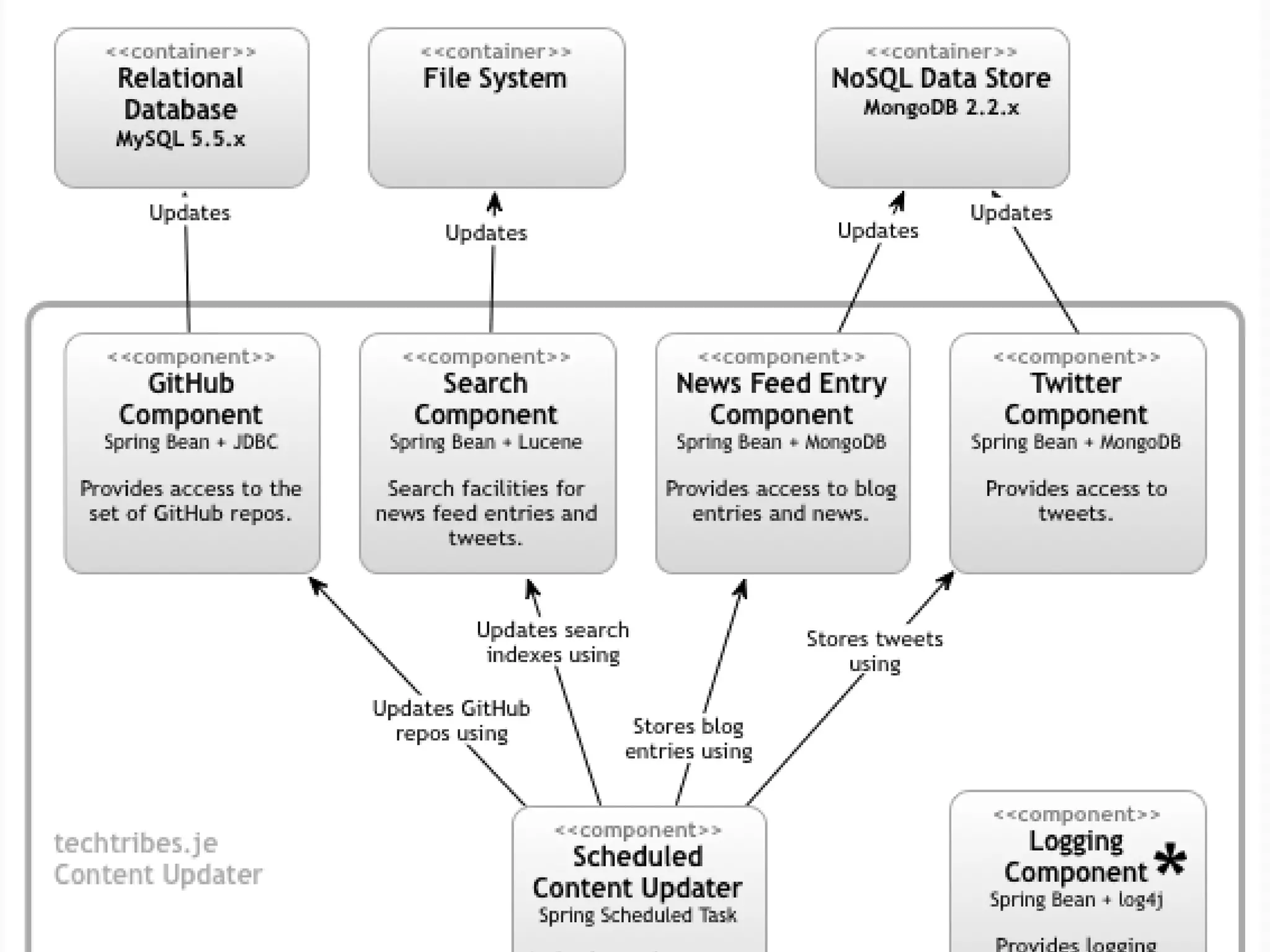
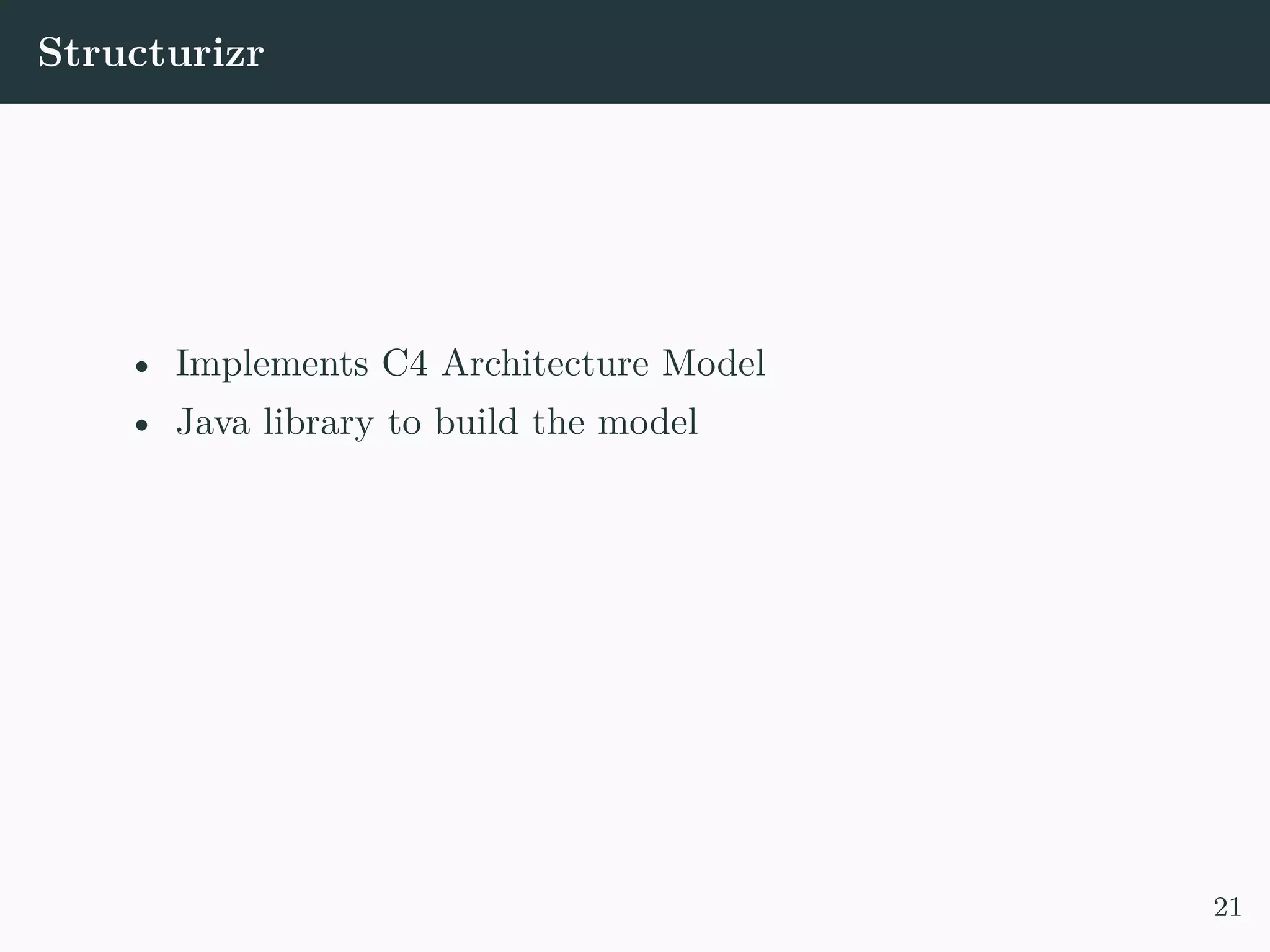
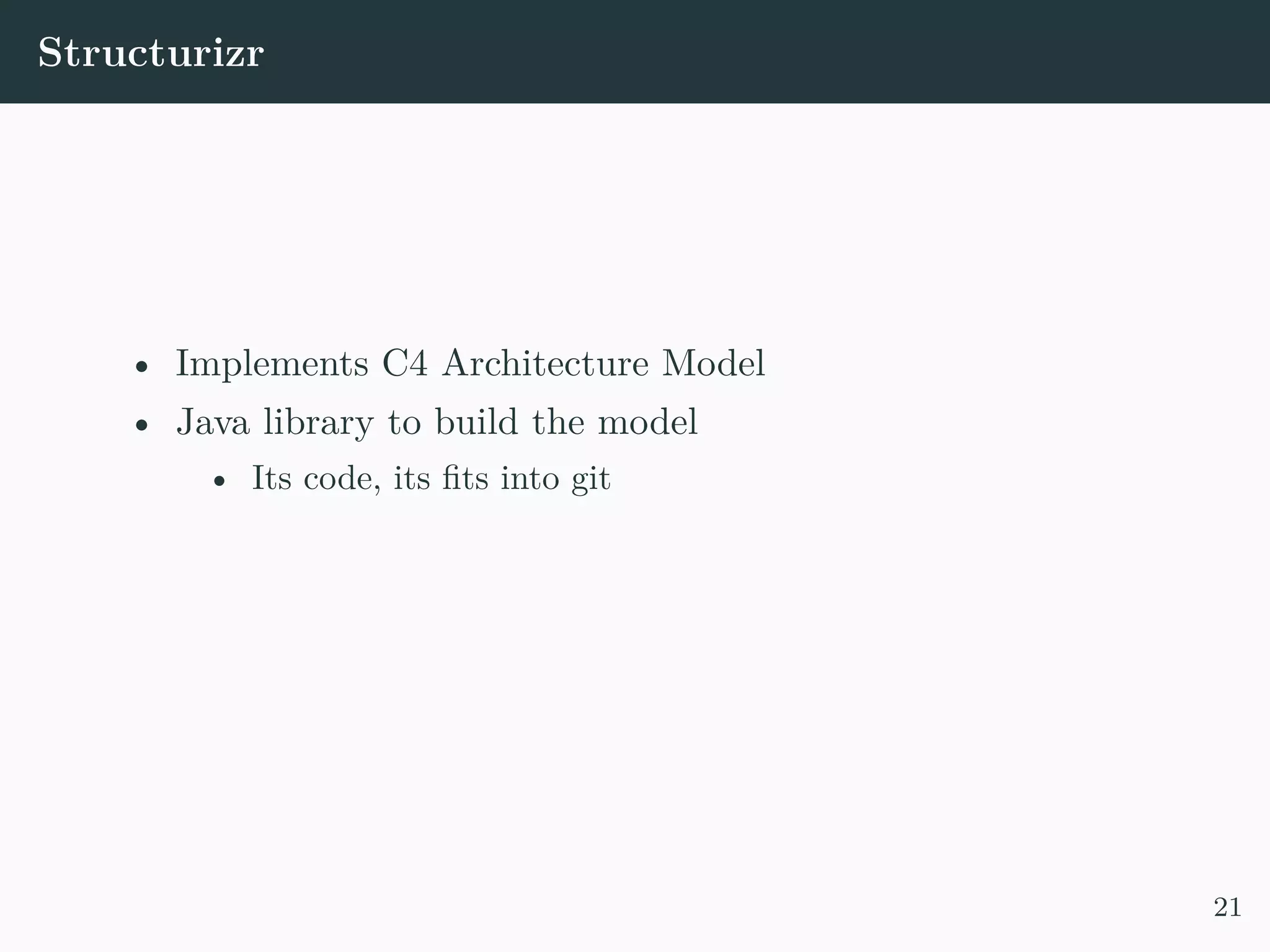
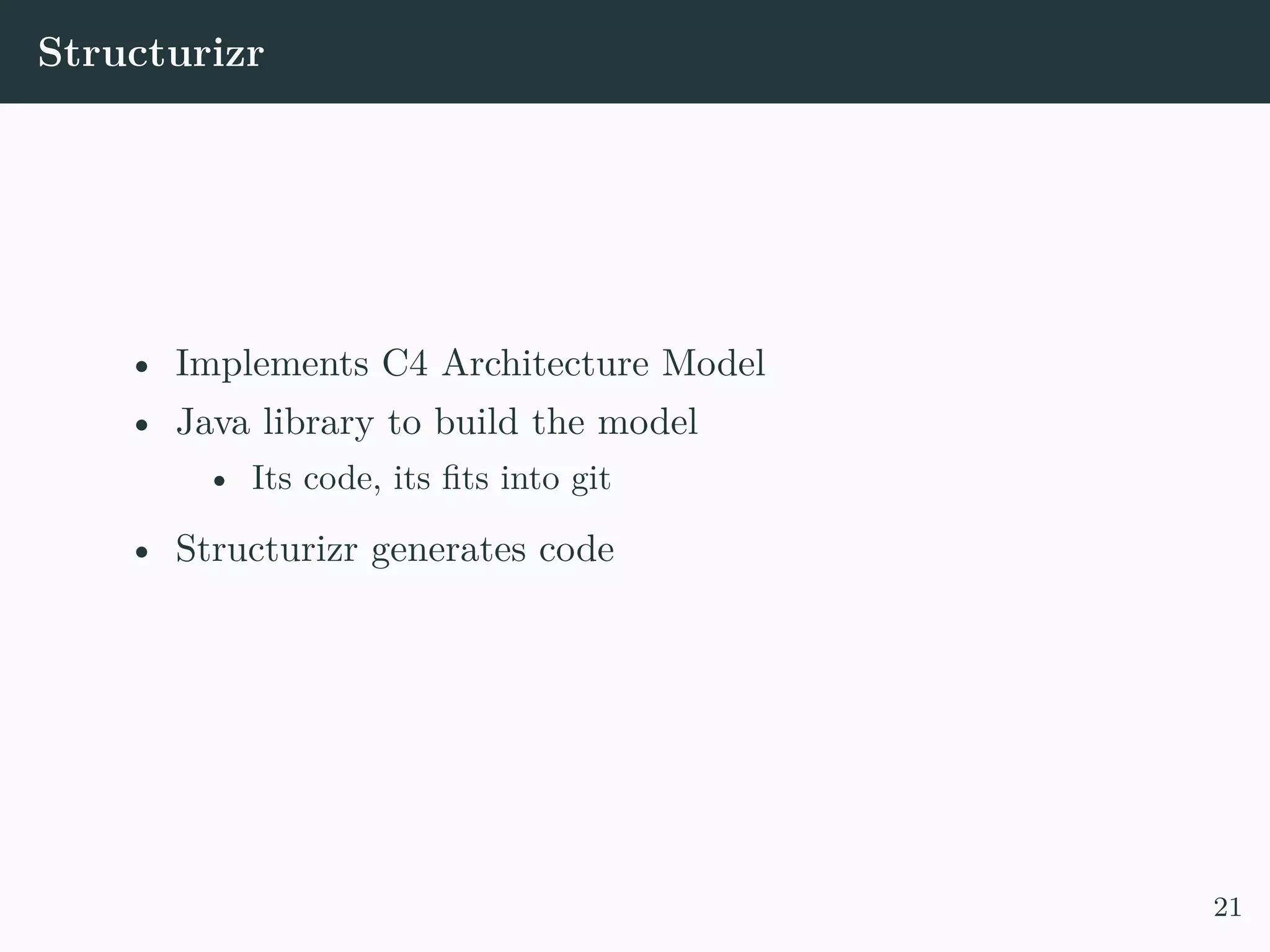
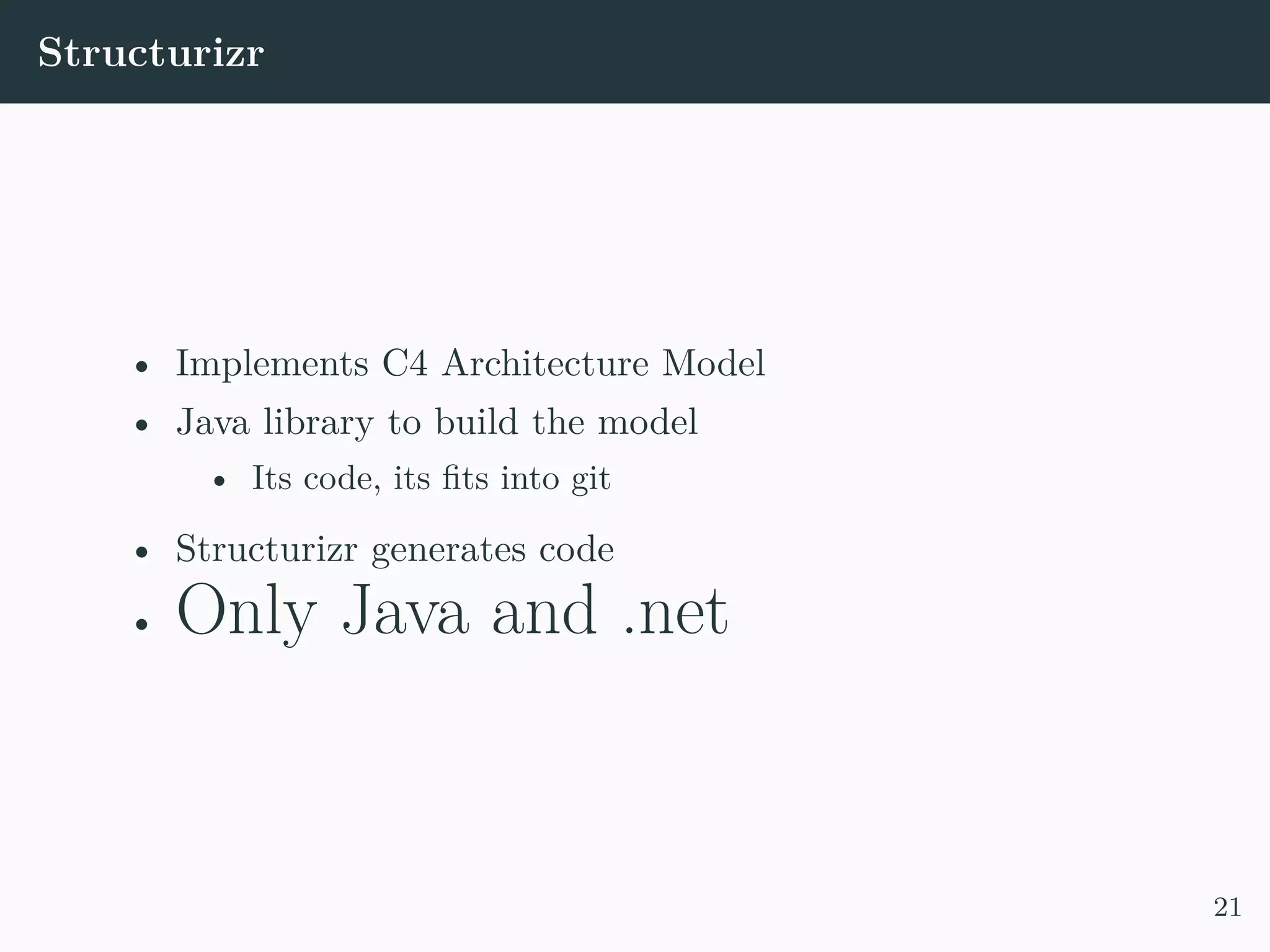



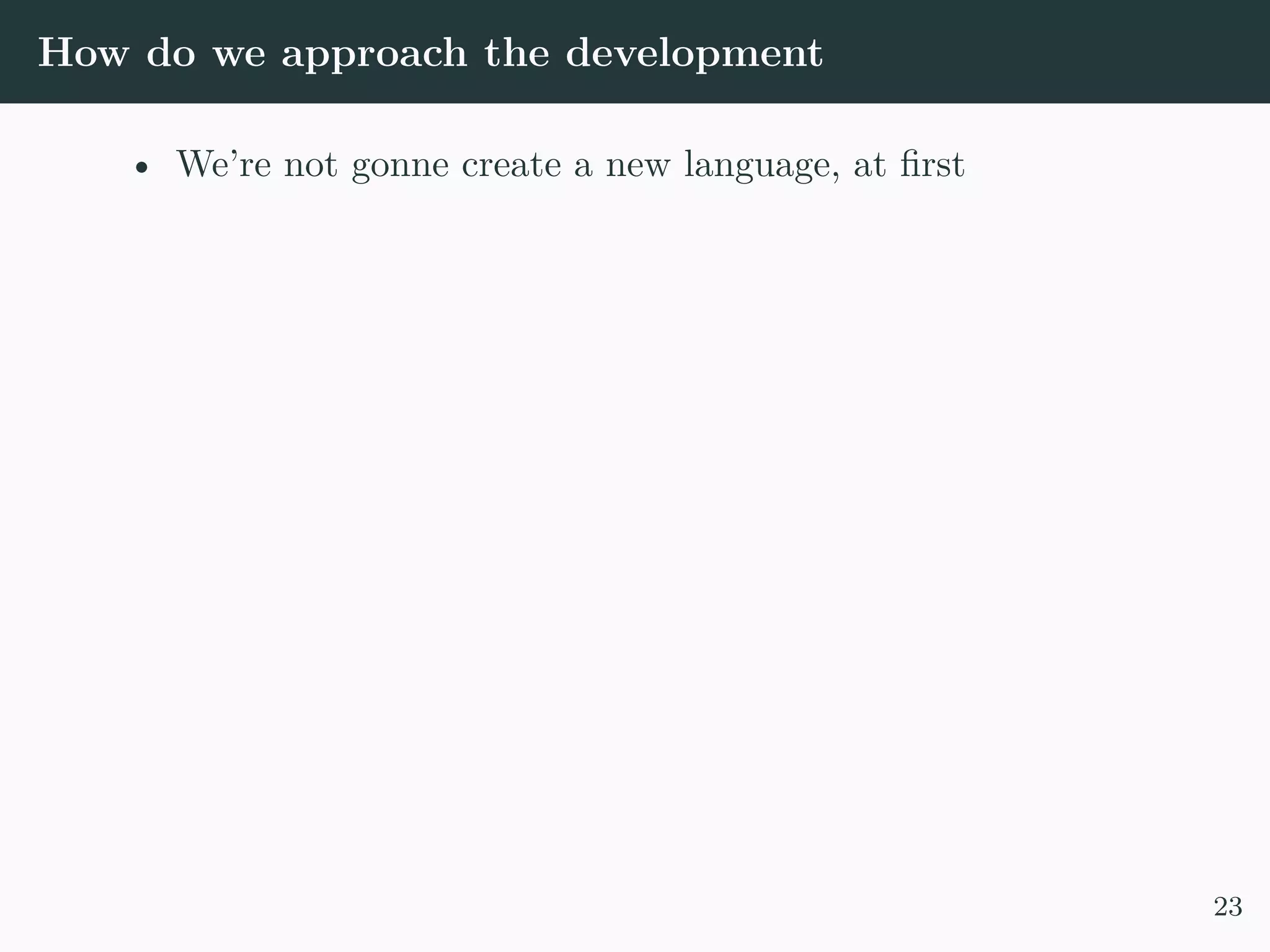

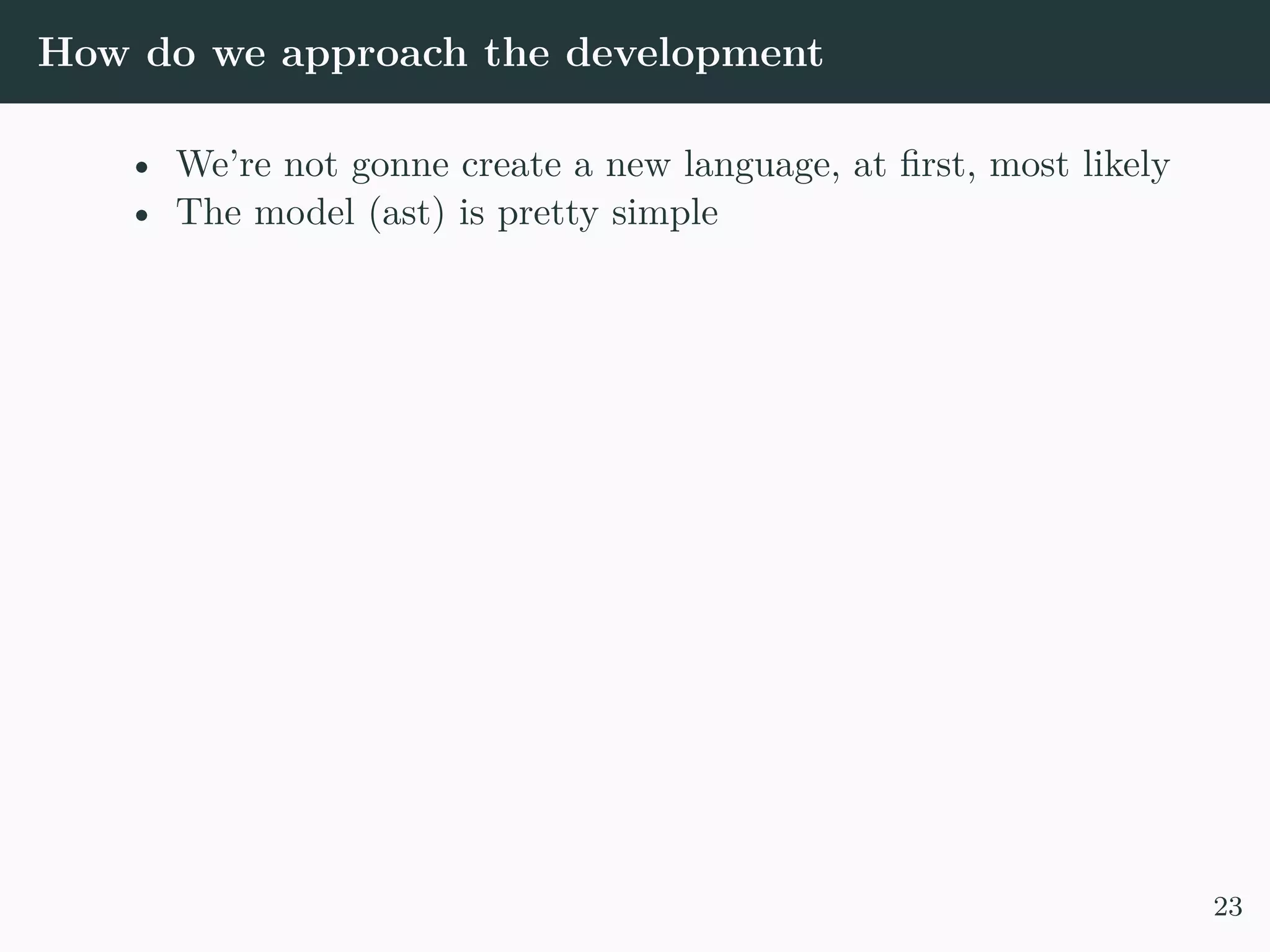





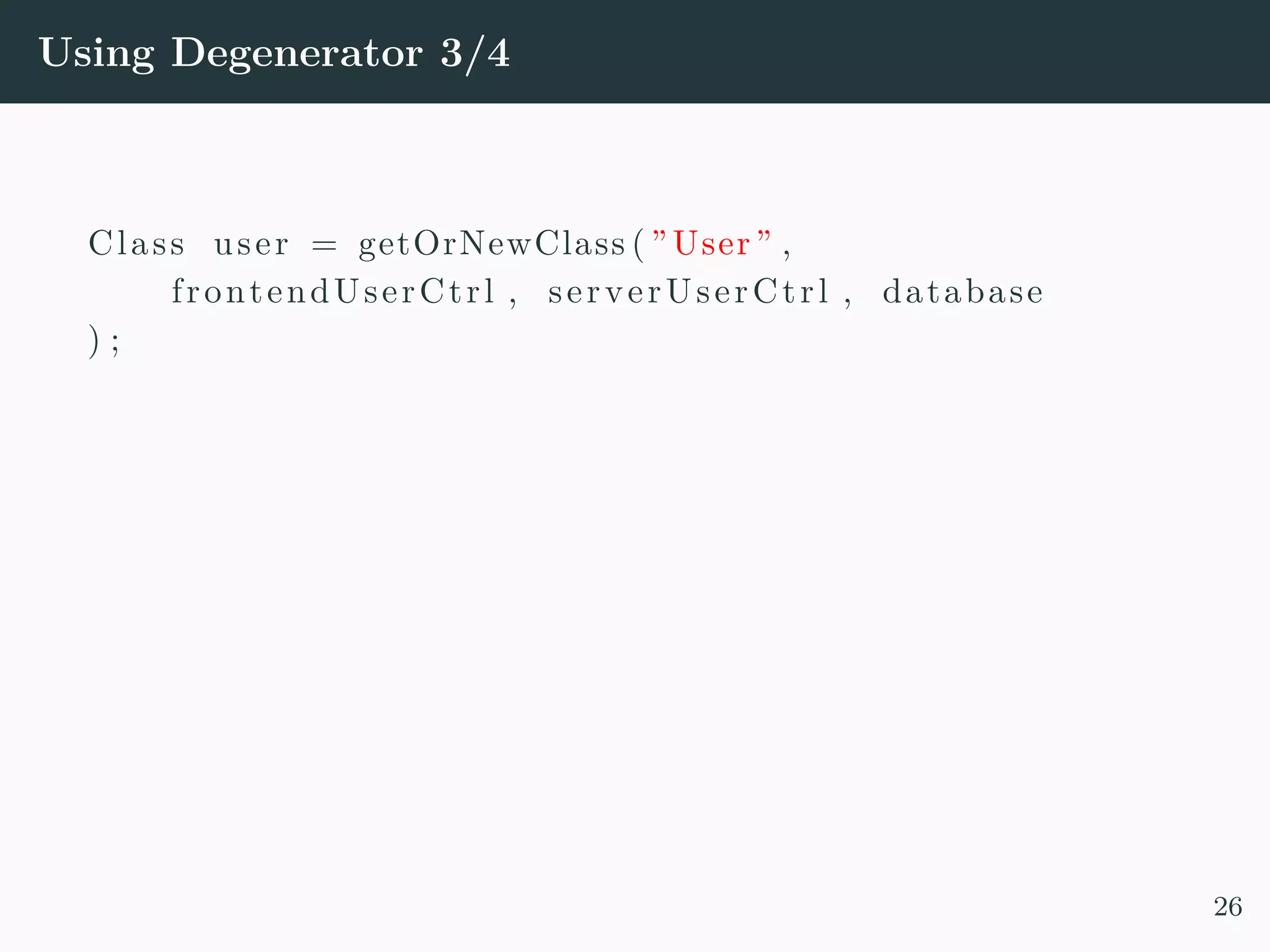

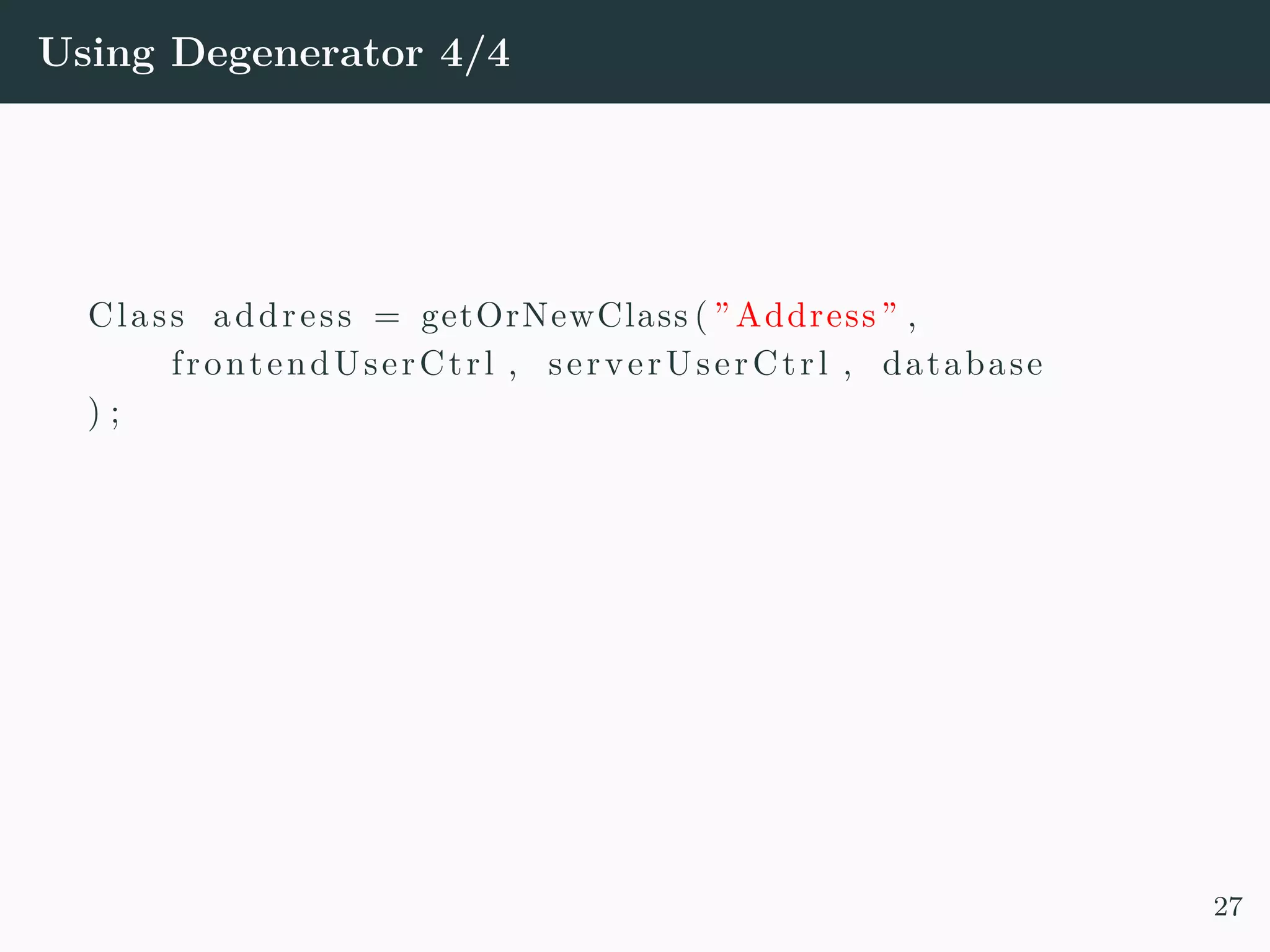
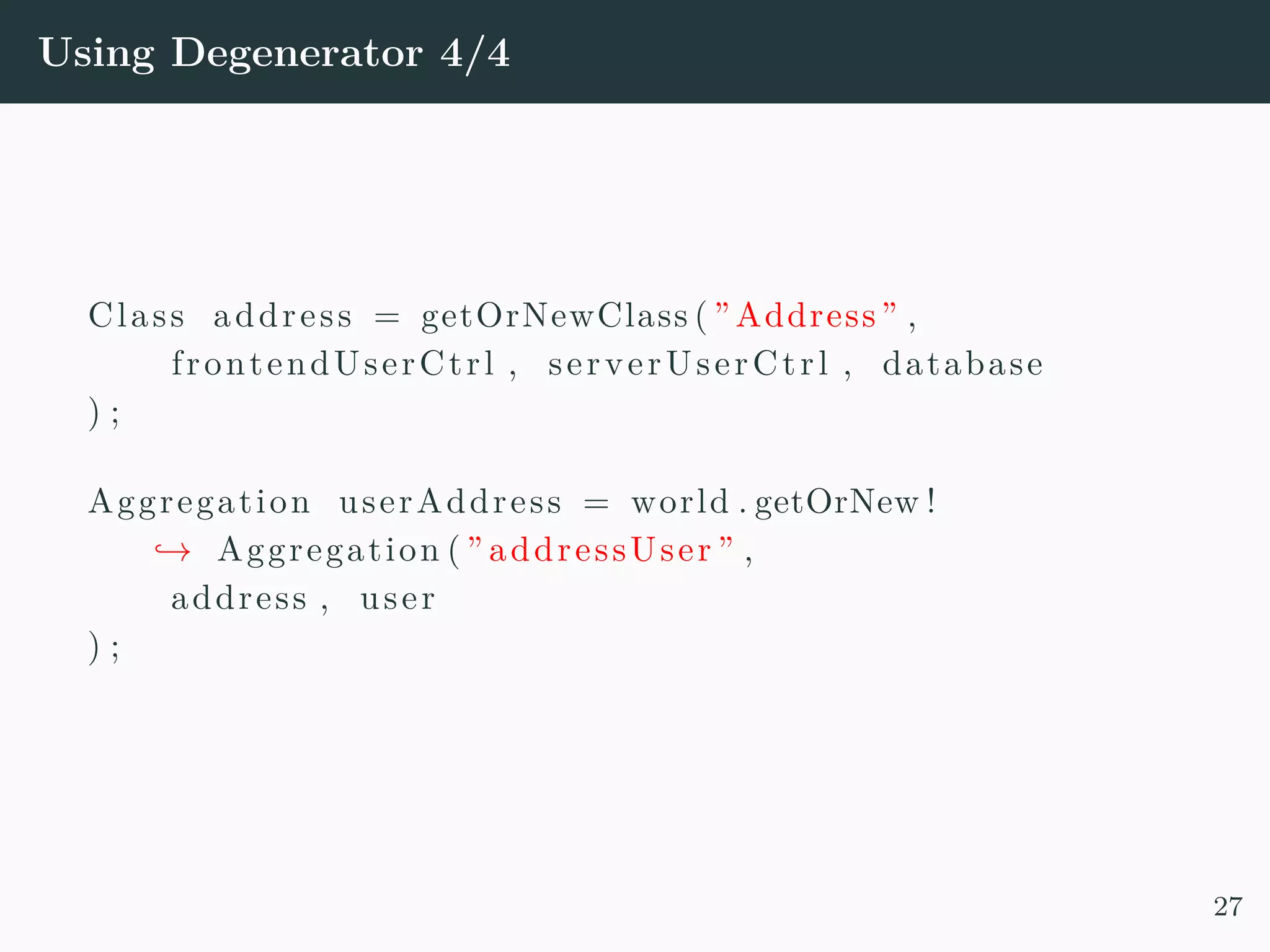


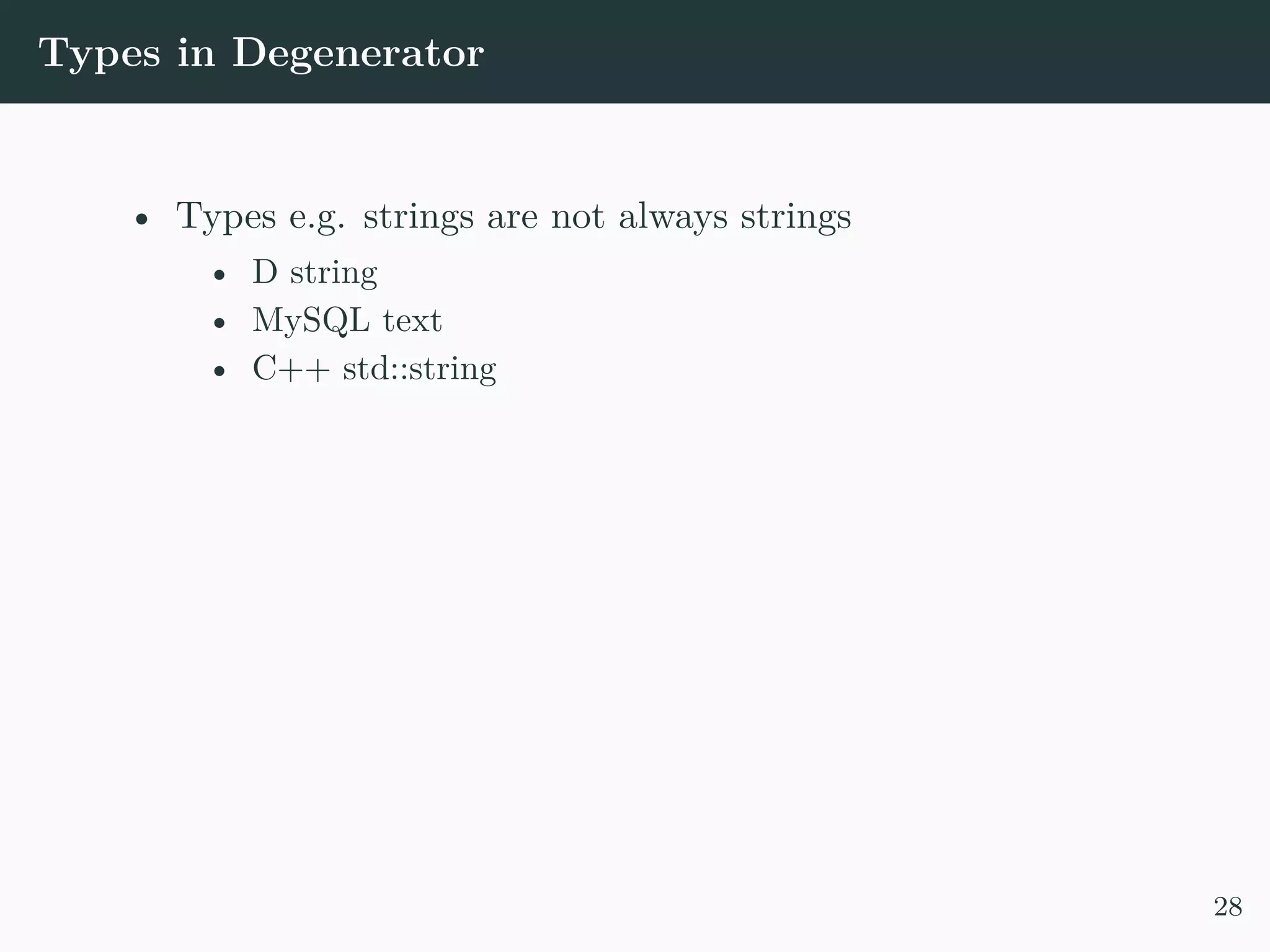
![Types in Degenerator • Types e.g. strings are not always strings • D string • MySQL text • C++ std::string struct Type { s t r i n g name ; s t r i n g [ s t r i n g ] typeMapping ; } auto pwdHash = Type( ” PasswordString ” ) ; 28](https://image.slidesharecdn.com/spa-160505111736/75/Asynchronous-single-page-applications-without-a-line-of-HTML-or-Javascript-or-why-D-is-just-awesome-73-2048.jpg)
![Types in Degenerator • Types e.g. strings are not always strings • D string • MySQL text • C++ std::string struct Type { s t r i n g name ; s t r i n g [ s t r i n g ] typeMapping ; } auto pwdHash = Type( ” PasswordString ” ) ; pwdHash . typeMappings [ ”D” ] = ” s t r i n g ” ; pwdHash . typeMappings [ ”MySQL” ] = ”VARCHAR(128) ” ; 28](https://image.slidesharecdn.com/spa-160505111736/75/Asynchronous-single-page-applications-without-a-line-of-HTML-or-Javascript-or-why-D-is-just-awesome-74-2048.jpg)

